

Unity (episode)
- View history
Chakotay is injured and trapped on a world where the inhabitants are embroiled in conflict, but the people who rescue and care for him harbor a disturbing secret.
- 1.2 Act One
- 1.3 Act Two
- 1.4 Act Three
- 1.5 Act Four
- 1.6 Act Five
- 2 Log Entries
- 3 Memorable quotes
- 4.1 Story development
- 4.2 Cast and characters
- 4.3 Sets, makeup, and costumes
- 4.4 Production
- 4.5 Effects
- 4.7 Reception
- 4.8 Video and DVD releases
- 5.1 Starring
- 5.2 Also starring
- 5.3 Guest Stars
- 5.4 Co-Star
- 5.5 Uncredited Co-Stars
- 5.6 Stunt double
- 5.7.1 Starship references
- 5.8 External links
Summary [ ]
While attempting to find a faster way through the Nekrit Expanse, Commander Chakotay and Ensign Kaplan cannot get a fix on their Class 2 shuttle's current position and are therefore lost. When Chakotay points out an asteroid field , Kaplan notes that it is the same one they passed two hours before – they have been flying in circles. They cannot contact Voyager as they are out of com range. Soon after, they pick up a signal buoy with a Federation signature. As they get closer, they hear a distress call from the planet . Before they land their shuttlecraft on the planet, Chakotay has Kaplan launch a message buoy so Voyager will know they landed in response to a distress call. Upon landing, they find a desolate scene and are met by a large group of aliens .
Act One [ ]
The two almost immediately come under fire from their attackers. Kaplan is shot by the unknown foes while Chakotay is left injured. Soon, another group comes and scares the hostiles off, taking the unconscious commander with them.
Chakotay wakes up in the dark to find himself in a room where he sees a woman by the name of Riley Frazier who tells him that Kaplan is dead and his shuttle has been destroyed by scavengers. Chakotay soon learns about Frazier and the others: they were attacked by aliens in the Bolian sector in the Alpha Quadrant , some were killed and others put in stasis . They woke up on this planet, along with several Romulans , Klingons , and Cardassians . All were grabbed from where they were. One group of them attacked Chakotay and Kaplan, and Frazier's group saved him. She tells him that she is part of a Cooperative .
After an otherwise uneventful journey, Voyager flies through the Nekrit Expanse. Lieutenant Tom Paris remarks that this region of space should be instead called the "Negative Expanse", as the crew has not come across anything remotely interesting for days. Captain Kathryn Janeway suggests that if the helmsman is bored, the warp plasma filters are due for a thorough cleaning. Paris then tells her that he now finds the Expanse to be an interesting navigational challenge. Later, Voyager discovers an apparently derelict and abandoned Borg cube . Captain Janeway orders that Voyager be taken to red alert .
Act Two [ ]
Janeway orders all stop, shields to maximum, and to stand by all weapons. However, chief tactical officer Tuvok cannot detect any Borg systems operational on the cube. Janeway has Ensign Harry Kim run a multiphasic scan , but the operations officer cannot find any active power signatures nor any life signs aboard. " Well, that's a relief ", Paris notes. Tuvok advises caution but Janeway decides to board the cube: this represents a rare – and highly valuable – opportunity to understand their technology.
Back on the planet, Chakotay continues to learn about the cooperative and their efforts. Oddly, Frazier also tells him that she has put down roots here, and desires to stay instead of joining Voyager . When she goes to work on the communications array, Chakotay wants to help but she refuses abruptly, saying he is too weak to work and that he should rest.
Meanwhile, Captain Janeway's away team boards the Borg cube. Tuvok and chief engineer B'Elanna Torres determine that all activity on the vessel ceased five years ago but for reasons they cannot yet explain. They theorize that either an accident occurred or, however improbable it seems, an attack from a more powerful species disabled the cube – though did not completely destroy it, instead leaving it adrift. Torres finds an access node. If she can get it operational, she should be able to tap into the cube's data systems to find an answer. While Tuvok tries to find a compatible micro-power relay to connect to a generator , a dead Borg drone falls in front of him from behind a wall.
In Voyager 's briefing room , Torres tells the captain that their scans have determined there are 1,100 Borg corpses on the cube. Tuvok remarks that they located a breached section of the cube, where some of the bodies of Borg were preserved perfectly. Torres adds that one of the bodies of a drone was brought aboard for an autopsy to provide an answer as to what killed them all. Janeway wonders why the Collective has left one of their ships with all of its technology intact for anyone to find. Tuvok suggests that the deactivation of the cube severed its link to the Collective. Torres, however, speculates that the Borg were possibly defeated by an enemy even more powerful than the Collective. Janeway orders Torres to assist The Doctor with the autopsy of the drone and suggests contacting Commander Chakotay to return from his scouting message early and let him know they have run into " some old friends. "
At the same time, Chakotay wakes again and manages to break out of the room where he was being kept. A vast plant is revealed, and all the individuals have implants similar to Borg drones . Chakotay explores as discreetly as he can, but the others don't seem to mind. Eventually, he sees Frazier again, without hair and with Borg implants.
Act Three [ ]
Chakotay demands answers, and Frazier, along with a Romulan , Orum , quickly explain that they were once drones, many assimilated during the Battle of Wolf 359 , but an electro-kinetic storm caused by the expanse broke their link with the hive mind . Realizing how far they were from Federation space, they settled on a planet and learned how to survive and cooperate with one another.
In sickbay , The Doctor concludes from his autopsy of a Borg corpse taken from the cube that it had been electrocuted and suffocated in space. But when The Doctor tries activating an axonal amplifier with a cortical probe , the drone jerks upright, frightening everyone observing. The Doctor manages to deactivate the drone. He remarks that he must have activated a backup neuroelectric power cell . Lieutenant Torres concludes that The Doctor's actions caused the Borg to reset to its original programming, meaning that the other corpses could also be reactivated. " We'd have a major problem on our hands ", Torres fearfully notes.
Due to the blast Chakotay took early on, his health soon worsens. Orum tells him that if he does not let them help him he will die before Voyager arrives. They help by using a neural link to heal Chakotay's injuries. " I'm not letting anyone implant some neural processor in my brain! " Chakotay is more than reluctant but he finally agrees when he sees no other alternative. During this experience he sees many of their memories and thoughts. It is a powerful and enlightening experience for him, and it also helps heal his neural damage. Interestingly, there are lingering effects from the link, even though the transceiver is removed. Frazier says it is temporary, and they enjoy it while it lasts.
Act Four [ ]
Chakotay helps the others with the communications array. He now knows what the group wants to achieve through the link, believing it a radical concept. Soon, Voyager arrives in orbit of the planet and try to contact Chakotay, but interference makes it difficult. When the inhabitants detect it, Frazier tries to persuade Captain Janeway to assist in re-establishing the link for the entire population permanently. Specifically, they want the Voyager team to re-activate the neuro-electric field generator on the Borg ship because they have enough energy to do so. While Janeway is willing to provide supplies, upgrade their security and even take some of them on Voyager if they wish, she is extremely skeptical about re-activating the neuroelectric generator. After Frazier leaves, Janeway asks for Chakotay's opinion. Chakotay says that the former Borg drones are sincere and they have no evil intent, and while in his heart he would do anything to help them, he agrees that the captain has to take other considerations into account. Janeway sees it as imposing a choice onto thousands of people without consent, and too dangerous that it may help create a new malevolent collective. Janeway decides not to help them and Chakotay lets Frazier know. She understands and bids him farewell, but not before another unsuccessful attempt by Chakotay to take her with him.
After Voyager has delivered them much-needed supplies, Chakotay and Torres start returning to Voyager via shuttle . He's disappointed and Torres makes a mental note for a holodeck session later. Suddenly, he hears the Cooperative again, saying they need his help. His head falls and comes under control of the telepathic link. He stuns Torres and goes to work.
Act Five [ ]
Tuvok sees the shuttle changed course and Janeway orders pursuit. The Cooperative explain they're under attack and need him to reactivate the generator aboard the abandoned Borg ship, directly violating his orders. He complies and beams aboard the cube. Chakotay avoids the Voyager away team searching for him as he locates the generator. Lieutenant Tuvok finds him, and Chakotay fires with Kim retaliating. However, Chakotay manages to activate the generator as he falls.
As soon as the generator is activated, the people attacking the Cooperative's compound stop their attack as they begin to hear the Cooperative's thoughts and the Cooperative welcomes them. However, the generator also activates the Borg ship and its dormant drones. The rescue team sent to intercept Chakotay, along with Chakotay himself, are quickly beamed aboard Voyager . The planet's inhabitants manage to trigger the Borg ship's self-destruct sequence before it gains weapon capabilities. Within three seconds the ship explodes. The inhabitants hail Voyager in their collective state and offer Voyager their lasting gratitude.
In sickbay, The Doctor explains that Chakotay's exposure to the Borg collective "heightened his telepathic receptivity" allowing them to influence him. Then, as Voyager travels away from the planet, Chakotay discusses the situation privately with Janeway and questions how long the inhabitants can retain a sense of morality amidst the power of a collective; it didn't take them long to use Chakotay against his will for their motives.
Log Entries [ ]
- First officer's log , stardate 50614.2. Ensign Kaplan and I are returning to USS Voyager , after completing a scouting mission in the Nekrit Expanse .
- Captain's log , stardate 50622.4. While Commander Chakotay scouts for a faster route through the Nekrit Expanse, we are continuing our month-long journey through the sparsely populated region.
- Captain's log, supplemental. We've detected a message buoy , launched from Chakotay's shuttle, and are heading toward it. The autopsy of the Borg corpse is under way.
Memorable quotes [ ]
" The nebula's completely scrambling our navigational readings. I still can't get a fix on our position. " " Are you saying we're lost, ensign? " " That... depends what you mean by lost, sir. " " Lost... as in you still can't get a fix on our position. "
" Well at least someone knows where we are. "
" I'm here to help you. " " How did... " " How did I get here? I could ask you the same question. " " It's a long story, why don't you go first. "
" There are dozens of different races on this planet, all of whom were brought here against their will. Many of them are suspicious of other species. It's not exactly a united federation around here, if you know what I mean. "
" You know, they ought to rename this region the 'Negative Expanse'. We haven't run across anything interesting for days. " " If you're bored, Mister Paris, I'm sure I can find something else for you to do. The warp plasma filters are due for a thorough cleaning. " " Now that you mention it, Captain, I find this region of space a real navigational challenge. "
" I must say, there's nothing like the vacuum of space for preserving a handsome corpse. "
" I thought you said the link was severed. " "It was... " "But we can re-initiate it, among a small group, for a short time." "We could generate a neuro-electric field that could heal your injuries." "You want to hook up my mind to some kind of Borg collective! Thanks, but I don't think so." ".If we don't do something to slow the neural degradation immediately, you will die."
" I'm not letting anyone implant some neural processor in my brain! "
" Don't be afraid, Chakotay. We're here to help you. Open your mind to our thoughts, and concentrate on getting well. Hear our voices. Open your mind to our thoughts. Our collective strength can heal you. You're safe with us. Feel the connection. We're with you. See who we are. Know us. You're not alone. Our strength is your strength. We can overcome your pain. We welcome you into our thoughts. There'e nothing to fear. We won't let you die. We're all one circle: no beginning, no end. "
" When we were linked, we had no ethnic conflict. There was no crime, no hunger, no health problems. We lived as one harmonious family. " " With all due respect, Dr. Frazier, you were one harmonious family bent on the violent assimilation of innocent cultures. "
" Proceed to interlink console 3 Beta 6. Hear our thoughts. Our thoughts are one. "
" They saved us from that cube, and they let you go. " " But they didn't hesitate to impose their collective will on me when it served their interests, did they? " " No, they didn't. " " I wonder how long their ideals will last in the face of that kind of power. "
Background information [ ]
Story development [ ].
- The decision to create a Borg episode for Star Trek: Voyager , specifically one that would air in the all-important February sweeps period, was made in May 1996 or thereabouts. ( Star Trek Monthly issue 23 ) After this decision was made, the prospect of the Borg appearing on Voyager influenced many story ideas that were pitched to the series. Staff writer Kenneth Biller explained, " We wanted to bring them back, and we got loads of pitches. " ( Cinefantastique , Vol. 29, No. 6/7, p. 86)
- Although Ken Biller was ultimately selected to pen this episode, he found it ironic that, even though he was the least avid of the Star Trek fans on Voyager 's writing team, the episodes he was assigned to write – for the third season of the series – included both this installment and the Q episode " The Q and the Grey ". ( Cinefantastique , Vol. 29, No. 6/7, p. 84)
- In coming up with this episode, Ken Biller wanted to make the Borg more interesting than their essentially one-note nature of relentlessly pursuing and consuming their enemies. He commented, " When you think about the Borg, they're interesting and cool, but they're just relentless and keep coming at you. How do you get under their skin? That was the question I had to ask. " ( The Official Star Trek: Voyager Magazine issue 18 ) The writer did some research by reading a script for Star Trek: First Contact , which was yet to be released at that point. ( Cinefantastique , Vol. 29, No. 6/7, p. 102)
- Ken Biller then hit upon the concept that the Borg could, in some way, be collectively deBorgified. " I suddenly got this image of the Tower of Babel , " he explained. " This incredibly interwoven, complex community had been created, and once you knocked it all down you would have all these people who spoke different languages, and couldn't communicate with each other. It occurred to me that a group of ex-Borg would be a very interesting community to explore. " ( Cinefantastique , Vol. 29, No. 6/7, p. 102) It was when considering how the episode should depict the Borg that Biller struck upon this solution. " That's when I came up with the Tower of Babel idea of 'What would happen if the Borg were severed from the link?' " ( The Official Star Trek: Voyager Magazine issue 18 )
- Ken Biller recognized a parallel between his idea and the break-up of the Soviet bloc. He recalled, " It suddenly occurred to me that it was basically like the Soviet Union , not to get too lofty about it. " ( The Official Star Trek: Voyager Magazine issue 18 ) As such, he personified – in the character of Riley Frazier – the renewed nostalgia for communism that had developed in the area following the Soviet Union's dissolution. Biller also considered representing the experience of being a Borg as a unifying, pleasant existence; this led him to not only conceive of the disputes between the former Borg, as they were no longer in such harmony, but also to ask the audience to consider this idea by having Frazier present Janeway with the moral ambiguity. Biller remarked, " I thought it would be an interesting question to pose to the audience, to make her appeal to Janeway using Janeway's own kind of ideals. " ( Cinefantastique , Vol. 29, No. 6/7, p. 102)
- The writers originally considered including a decimated wasteland of Borg ships in this episode, such as had appeared – as the aftermath of the Battle of Wolf 359 – in TNG : " The Best of Both Worlds, Part II ". " To be honest with you, " Brannon Braga admitted, " we were going to do a Borg graveyard, and we didn't because we decided to just make it one cube. " Despite such an area ultimately not featuring here, the concept was brought to fruition for the third season finale " Scorpion ". Braga noted, " It's kind of an image that we had held over. " ( Star Trek Monthly issue 28 , p. 17)
- This episode's first-draft script was submitted on 29 October 1996 . The script's final draft was submitted on 7 November 1996 . [1] Shortly after the final draft was approved, co-executive producer Jeri Taylor said that the installment "has been written and starts shooting soon." ( Star Trek Monthly issue 23 )
Cast and characters [ ]
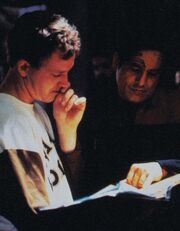
Robert Duncan McNeill with Robert Beltran
- Ken Biller considered Riley Frazier to have worthy motives, noting, " [Riley's] motives were really noble. " ( Cinefantastique , Vol. 29, No. 6/7, p. 102) This was not, however, how the character was viewed during production. In fact, Chakotay actor Robert Beltran was advised to think of her as a truly evil character. Director Robert Duncan McNeill recalled, " I told Robert [Beltran] that a real powerful image for me was that he was being seduced by the devil . The Borg woman is beautiful and sweet and sincere, but deep down, she is the devil. It was great when he got that. " ( Star Trek: Communicator issue 112 , p. 56) McNeill also commented, " For me, 'Unity' was about Chakotay being seduced by the Devil, and that's what I told Robert Beltran. I said, 'let's make this kind of a film noire . Here's this dangerous woman, but she doesn't appear very dangerous in the beginning. She's very seductive. She's very sweet. And ultimately she turns out to be the Devil. She's still one of the Borg and part of that dangerous collective, and he's seduced by her. That was the story that I wanted to tell. " ( Star Trek Monthly issue 27 , p. 13)
- Robert Beltran liked this episode. ( Cinefantastique , Vol. 29, No. 6/7, pp. 93-94; Star Trek Monthly issue 38 , p. 18)
- Years after portraying Orum herein, Ivar Brogger went on to appear as Barus in the seventh season episode " Natural Law ".
Sets, makeup, and costumes [ ]
- The Borg set that was used for this episode was not from Star Trek: First Contact , although the physical designs of the Borg drones were, providing a revitalized look to the Borg of this installment. Robert Duncan McNeill explained, " The Borg costumes and makeup were from the movie. It was the new Borg, the scarier Borg. " ( Cinefantastique , Vol. 29, No. 6/7, p. 102)
- The Borg appliances were typically time-consuming to apply. Citing one particular example of this, Robert Duncan McNeill said, " We had a Borg with a working arm. He had an arm that was supposed to look like scissors, and the cables weren't working. All of a sudden you look at your watch and an hour or two has gone by and you haven't done anything because you're playing with cables. " This mechanical arm was one of the costume pieces that had previously been used in Star Trek: First Contact . ( Cinefantastique , Vol. 29, No. 6/7, p. 102)
- Robert Duncan McNeill found the episode's Borg set to be basically too small. He explained, " The Borg set, believe it or not, was one hallway that was about 40 feet long that curved around. It was the smallest set that I've ever seen in my life. We had no room on the stage to build a big Borg ship, because the other sets took up so much room. All the room they had was basically 40 feet in a semicircle. I said, 'You can't do this. The Borg are supposed to have these huge cubes.' " ( Cinefantastique , Vol. 29, No. 6/7, p. 102)
- According to the unauthorized reference book Delta Quadrant (pp. 169 & 160), this episode's colony was mostly a redressed set that had previously been used for the Akritirian maximum security detention facility in " The Chute " and Bahrat's space station in " Fair Trade ".
- The planet set of this episode was artificially extended via the use of a computer-generated matte painting created by Eric Chauvin (who had freelanced for Voyager ever since its pilot, " Caretaker ", and was a friend of visual effects supervisor Mitch Suskin ). " There's a wide establishing shot of the encampment, in a desert. It was all shot on the soundstage, and there's a construction crane that was moving around, " Mitch Suskin explained, adding, " The building was extended. " ( Cinefantastique , Vol. 29, No. 6/7, p. 105)
Production [ ]
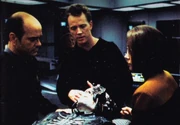
Director Robert Duncan McNeill with actors Robert Picardo and Roxann Dawson while filming this episode
- This episode was the second of four Voyager installments to be directed by Robert Duncan McNeill (who usually only played Tom Paris on the series); his directing debut had been the earlier third season episode " Sacred Ground " and he later directed the fifth season installment " Someone to Watch Over Me " as well as the Season 7 episode " Body and Soul ". Shortly after finishing work on "Sacred Ground," he commented, " My next show is the one that introduces the Borg, the ones you saw in Star Trek: First Contact , to our show. It's a different challenge to direct an action piece [than to direct a more character-oriented episode, such as 'Sacred Ground.'] " ( The Official Star Trek: Voyager Magazine issue 11 )
- Due to the fact that this episode's depiction of the Borg is a metaphor for the disintegrating Soviet bloc, Robert Duncan McNeill researched the history of that subject shortly before directing the installment. " I actually did some reading about that, about Russia and all the politics that went on, " he revealed. " I think some of those ideas did come out in the story, even though it wasn't a really heavy, political episode. Yet there were some references and you could connect that to contemporary issues, individuality as opposed to group needs or desires. " ( Cinefantastique , Vol. 29, No. 6/7, p. 108)
- This episode's filming took place between 11 November 1996 and the 20th of that month .
- The fact that the Borg were only to be shown minimally in this episode, despite the installment having been eagerly anticipated over a long stretch of time, put extra pressure on Robert Duncan McNeill. Shortly after working on the episode but before the installment was aired, McNeill recalled, " What was most frightening for me was knowing that it was a Borg episode, but the Borg were only on two and a half pages of the whole script. The rest was all the mysterious ex-Borg. I said to the producers, 'You know, you're giving me a Borg episode, but we never get to see the Borg. I need more Borg or the fans are going to go crazy.' So I tried to give the same sort of suspense and mysterious quality that you get from the Borg. I tried to give that through the whole piece, so hopefully the fans will still feel that same tension without actually seeing the Borg for the whole piece. They really don't appear except on two or three pages of the script but there was a lot of pressure with this being the Borg introduction [to Star Trek: Voyager ]. " ( Star Trek Monthly issue 27 , p. 14)
- Another factor that created pressure on the episode's production was the challenge of measuring up to the promise of Star Trek: First Contact , that Star Trek film having been released three months before this episode was first aired. Robert Duncan McNeill explained, " With the film coming out, there were a lot of comparisons to that. How can we achieve something that doesn't drop the ball with what the movie did? [....] There was a lot of pressure not to repeat what they did, yet do something with [the Borg] that was just exciting. " ( Star Trek Monthly issue 27 , p. 14)
- During production of this episode, Robert Duncan McNeill and the crew tried to hide the smallness of the Borg set. " I think we disguised that fact, and made it seem like it was really this labyrinth of tunnels, " he said. " They'd walk down the tunnel once, and right by the camera, and then we'd cut, and they'd go back to the other end, and walk it again. " ( Cinefantastique , Vol. 29, No. 6/7, p. 102)
- In the moment between Janeway and Chakotay in the briefing room, Janeway paces the room as if she is Chakotay's conscience or guardian angel, while he ponders his situation. Explaining how this unscripted action came about, Robert Duncan McNeill recalled, " Kate Mulgrew came into the scene and said, 'I think this is a very delicate fishing expedition for Janeway with Chakotay. It's a very intimate moment.' She wanted to sort of move around and keep moving. That was not at all what I had planned. I had a completely different plan, and she did this movement and tried a feeling that I hadn't expected at all for that moment. " The action influenced the filming of the scene. " Because of what she did, " McNeill continued, " that shot came to me. I said, 'If that's what you want to do there, and I think it's working, let's do something different with the camera. Let's stay in real tight and have it just pass back and forth.' " McNeill concluded, " It's a much more intimate, mysterious shot than what I had planned, and it was really exciting to me when that happened. " ( Star Trek Monthly issue 27 , p. 14)
- The montage that this episode uses to represent Chakotay's experience of linking with the Cooperative features both newly shot footage (such as shots of the young Riley Frazier with her grandfather) and archive footage from such episodes as TNG : " Q Who ", DS9 : " Emissary ", and " The Way of the Warrior ", as well as VOY : " Caretaker ". " Some of that was scripted, " Robert Duncan McNeill said of the sequence. " Some of the things that were scripted we couldn't find, so that was a real collaboration, [between] Jeri Taylor and myself, Ken Biller, the writer, Bob Lederman , the editor and [producer] Wendy Neuss as well. We tried to go from the dialogue of what they actually said and then reinforce that with the images in the montage. " ( Cinefantastique , Vol. 29, No. 6/7, p. 102)
Effects [ ]
- Voyager 's visual effects artists were eager to work on a Borg episode but felt somewhat let down by the scale of this installment. " We knew a Borg script was coming down the pipe, and we were excited, " Mitch Suskin recalled. " When we first read the script we were disappointed that it wasn't a big battle, but as the show developed I started to like it a lot more. " ( Cinefantastique , Vol. 29, No. 6/7, p. 104)
- This episode debuted a newly designed version of the Borg cube. This was the third rendition of that particular ship design: the previous two versions had both been studio models , with the first having been featured in Star Trek: The Next Generation and the second having been built by Industrial Light & Magic for Star Trek: First Contact . Mitch Suskin commented, " The challenge of building another Borg cube and doing it CG was something we were curious to see if everybody would accept. " ( Cinefantastique , Vol. 29, No. 6/7, p. 104) The CGI model of the cube was built at Foundation Imaging by Emile Edwin Smith , who based it on the Next Generation and First Contact physical models. " Well, when I built the new cube for Voyager , " Smith recalled, " I based everything off image maps and then modeled around them. To make it real simple I had an underlying cube that was mapped with an image. I then took the main image that I had created into modeler and started building on it. Basically it was large areas of chunkiness raised above the inner cube with many of the detailed areas of the map modeled on these areas. I also interconnected the pieces with tubes and added edge pieces to make it look more dimensional and 3d on the edges. " [2]
- Some footage of the previous physical type of Borg cube was also used here. Emile Edwin Smith noted of this installment, " We animated 90% of all the visual effects, the other 10% were stock model shots. " [3] Some obvious examples where footage of the Borg cube was reused is in the montage sequence when Chakotay links with the former Borg.
- The visual effects artists were also tasked with designing the effect of the weapon blast that injures Chakotay at the start of the episode's first act. Recalling the creation of this effect, Mitch Suskin stated, " We had the big gun that Chakotay gets hit with, and the only thing we really knew was that it had to be some sort of energy wrapped around his body or head and gave him neurological damage. We sat down with Greg Rainoff , who's our animation effects artist, and played around with a few things. " ( Cinefantastique , Vol. 29, No. 6/7, pp. 104-105)
- As Kim fires a phaser at two different Borg drones in the episode's climax, the visual effects artists were challenged with matching the look of the Borg being shot to the effects in Star Trek: First Contact . Mitch Suskin explained, " When the Borg get shot at, they have this shield that lights up. It's a 3-D effect with a couple of different elements, and because the movie had just come out, Mr. Berman wanted us to duplicate what was done on the feature. We were afraid that we wouldn't have the time or the money to do it. We wound up getting the elements that they used in the feature and tracking it in, much the way they did. It's usually the easiest things that give us the most trouble, and that was the case. " ( Cinefantastique , Vol. 29, No. 6/7, p. 105)
- Ultimately, Mitch Suskin was highly pleased with the ways CGI was incorporated into this episode. He commented, " When that Borg cube exploded, the only element was the explosion, the rest was accomplished in the CG domain. It was a real breakthrough. That was the first show that I really had no reservations about. " ( Cinefantastique , Vol. 29, No. 6/7, p. 104) Regarding the ultimately used effect of the blast that hits Chakotay, Suskin also enthused, " I think it really fell together, I was very pleased. " ( Cinefantastique , Vol. 29, No. 6/7, p. 105)
Continuity [ ]
- Voyager loses at least its third shuttlecraft in this episode, and the first of its type ( Class 2 ), having previously lost three shuttles in " Initiations ", " Non Sequitur " and " Parturition ".
- This is the last episode to be set inside the Nekrit Expanse , through which the crew has been traveling since the events of " Fair Trade ". The Expanse would be seen again, however, in " Distant Origin ", from the point of view of Gegen during his search for Voyager .
- The death of Ensign Kaplin in this episode brings the total number of confirmed crew deaths since the series premiere " Caretaker " to 13, the previous death having occurred in " Warlord ". This leaves Voyager with a crew of 140, given Voyager 's crew compliment of 152 established in " The 37's " (after the first of these deaths).
- This is the sixth time the crew of Voyager discover a direct connection between the Alpha Quadrant and Delta Quadrant, having previously discovered a wormhole connecting the two quadrants (" Eye of the Needle "), descendants of human abductees (" The 37's "), descendants of aliens who have visited Earth (" Tattoo "), a Cardassian weapon (" Dreadnought "), and Ferengi (" False Profits ").
- This encounter with the Borg is foreshadowed slightly earlier in the series, by the discovery of a Borg corpse in the previous episode, " Blood Fever ". The only other previous presence of the Borg in Star Trek: Voyager is two references to them in the second season installment " Death Wish ", wherein both of the references are to the Q Continuum 's dealings with the Borg before that episode. Continuing this storyline, the events of this episode are later referenced in the fourth season episode " Scorpion, Part II ".
- Torres' suggestion that the Borg may have been defeated "by an enemy even more powerful than they were" seems to foreshadow the introduction of Species 8472 , who went on to make their first appearance in VOY : " Scorpion " at the end of the third season . This was, indeed, the intention of "Scorpion" co-writer Brannon Braga: to tie the two episodes together, while leaving the events of each episode independently understandable. Braga said, " 'Scorpion' definitely ties in with an event in 'Unity' but not such that you would have to have seen that episode to understand it. In 'Unity', we find a disabled cube. It was really never made clear how the cube was destroyed, and now [meaning in 'Scorpion'] you'll find out [...] So 'Unity' is only a hint of things to come. " ( Star Trek Monthly issue 28 , p. 17)
- When the Borg cube first appears on-screen, an unusual tone – reminiscent of the Borg theme in Star Trek: First Contact – can be heard.
- This is the first episode to establish that at least some of the Borg could continue to function following the defeat of their queen and some drones in Star Trek: First Contact . In fact, prior to the writing of this episode, there was considerable debate as to whether the Borg should make an appearance in Star Trek: Voyager , after the events of that movie. While the series' team of writer-producers were considering this possibility, First Contact co-writer Ronald D. Moore expressed a belief that the film should be the last appearance of the Borg, whereas Brannon Braga, the film's other co-writer, divulged his support for what happens here – apparently "dead" Borg being revived. ( Star Trek Monthly issue 24 , pp. 36-37) With regard to this issue, Ken Biller said, " I think Rick [Berman] is very clear that just because we saw Borg destroyed in the movie doesn't mean that the entire collective was destroyed. We leave that an open question. There are other Borg in the Delta Quadrant. " ( Cinefantastique , Vol. 29, No. 6/7, p. 86)
- It is not explained how the former drones could be alive when the cube that assimilated them at Wolf 359 was destroyed in the Sol system during "Best of Both Worlds". One possible explanation is that before the cube's destruction, they left the battle in a sphere similar to the one seen in Star Trek: First Contact .
Reception [ ]
- Ken Biller was ultimately "really proud" of this installment. He noted, " I loved that episode. " ( The Official Star Trek: Voyager Magazine issue 18 )
- Both Jeri Taylor and Brannon Braga also thought highly of this episode. Citing the installment as one of the highlights of Voyager 's third season, Taylor noted, " I thought that our Borg episode in February, 'Unity', took an interesting look at that race. " ( Star Trek Monthly issue 31 , p. 11) Braga similarly included this episode among a few examples of third season Voyager installments that he thought were good (the other episodes being " Scorpion " and " Distant Origin "). Of this particular installment, he said, " I think 'Unity' was a very good example [of a good Star Trek: Voyager episode]. It was unexpected. It had a fascinating premise about the Borg, kind of a metaphor for the Soviet Union. " ( Star Trek Monthly issue 29 , p. 13)
- Yet another production staffer who was satisfied with this episode was Robert Duncan McNeill. He enthused, " I was really happy with it. I was very pleased. " ( Star Trek Monthly issue 27 , p. 14) Regarding the success of having advised Robert Beltran to think of Riley Frazier as the Devil, McNeill commented, " I think that we got a lot of that seduction, a lot of the character stuff in there, and ultimately a lot of action as well. " ( Star Trek Monthly issue 27 , p. 13) McNeill was also personally pleased with the way this episode portrays the Borg; he told an audience at the bi-annual Novacon convention in April 1997 that he was proud of the episode "because the Borg were not [as] one-dimensional as previously depicted, but still as evil as ever." ( Star Trek Monthly issue 29 , p. 5) McNeill was initially concerned, though, about whether the episode's depiction of the Borg would be received well by Star Trek 's fans . " The Borg are the essence of evil in a way, and this was kind of showing the cracks in that evil, " he observed. " If we deactivate these bad guys, then they're really not so bad after all. I was nervous that the fans were going to reject that. " ( Cinefantastique , Vol. 29, No. 6/7, p. 108)
- This episode achieved a Nielsen rating of 5.4 million homes, and an 8% share. [4] (X)
- Much to the relief of Robert Duncan McNeill, the idea of the defanged Borg apparently piqued the fans' interest. " I think that they were really interested in the idea [....] When Star Trek has got good ideas and strong writing, " McNeill stated, " that's what it's good at–making people think. I think this episode definitely did that on a lot of levels, and it entertained them at the same time. " ( Cinefantastique , Vol. 29, No. 6/7, p. 108)
- The temporary relationship between Chakotay and Riley Frazier upset some fans; specifically, the "J and C" group – the fans who were eager for the relationship between Janeway and Chakotay to become more explicit. ( Cinefantastique , Vol. 29, No. 6/7, p. 94)
- Cinefantastique rated this episode 3 and a half out of 4 stars. ( Cinefantastique , Vol. 29, No. 6/7, p. 105)
- Star Trek Magazine scored this episode 3 out of 5 stars, defined as "Warp Speed". ( Star Trek Monthly issue 29 , p. 58)
- The unauthorized reference book Delta Quadrant (p. 171) gives this installment a rating of 7 out of 10.
- Brannon Braga was not eager for the Cooperative to reappear after this installment, although he was open to the question of their fate being answered in the future. When quizzed about the possibility (prior to the airing of the third season finale "Scorpion") of fans seeing the Cooperative again, he rhetorically asked, " Do you want to? " Pounding one of his fists in the air as if he was hammering nails into a coffin, he added, " Nailing in nails. " Moments later, he continued, " The Cooperative is long gone, man. It's been months since we've seen the Cooperative. That's not to say we won't learn someday what happened to them. That's kind of an interesting question. " ( Star Trek Monthly issue 29 , pp. 17-18)
- Several costumes and props from this episode were sold off on the It's A Wrap! sale and auction on eBay, including the costume of Ivar Brogger ( Orum ). [5]
Video and DVD releases [ ]
- UK VHS release (two-episode tapes, CIC Video ): Volume 3.9, 21 July 1997
- As part of the VOY Season 3 DVD collection
Links and references [ ]
Starring [ ].
- Kate Mulgrew as Captain Kathryn Janeway
Also starring [ ]
- Robert Beltran as Commander Chakotay
- Roxann Dawson as Lieutenant B'Elanna Torres
- Jennifer Lien as Kes
- Robert Duncan McNeill as Lieutenant Tom Paris
- Ethan Phillips as Neelix
- Robert Picardo as The Doctor
- Tim Russ as Lieutenant Tuvok
- Garrett Wang as Ensign Harry Kim
Guest Stars [ ]
- Lori Hallier as Riley Frazier
- Ivar Brogger as Orum
Co-Star [ ]
- Susan Patterson as Marie Kaplan
Uncredited Co-Stars [ ]
- Alien Cooperative member
- Steve Carnahan as operations officer
- Damaris Cordelia as alien Cooperative member
- Regan DuCasse as alien Cooperative member
- Tarik Ergin as Ayala
- Mark Major as Borg drone
- Borg corpse
- Craig Reed as alien Cooperative member
- Irving Ross as alien Cooperative member
- Richard Sarstedt as William McKenzie
- Lou Slaughter as Borg drone
- Jennifer Somers as sciences officer
- Pablo Soriano as alien Cooperative member
- John Tampoya as Borg drone
- Michael Todd as alien Cooperative member
- Alien raider
- Riley Frazier (child)
- Riley Frazier's grandfather
- Cooperative members
Stunt double [ ]
- LaFaye Baker as stunt double for Susan Patterson
References [ ]
2368 ; 2440 ; ability ; access node ; alveoli ; anarchy ; appendage ; asteroid field ; Alpha Quadrant ; automaton ; autopsy ; axonal amplifier ; barbecue ; bearing ; bluebonnet ; body part ; Bolian sector ; Borg ; bunker ; Cardassians ; cardiac depolarization ; chair ; class M ; collective consciousness ; combadge ; Cooperative ; cooperative garden ; communications array ; community ; cortical probe ; data node ; distress call ; donor ; dozen ; electrocution ; electrodynamic turbulence ; electromechanical discharge ; electrokinetic storm ; ethnic conflict ; euphoria ; Farn ; Federation ; Federation hailing beacon ; Frazier's mother ; ghost ship ; Happy Hunting Grounds ; heart ; hive mind ; holodeck ; homesteader ; horse ; hour ; hoverball ; hull damage ; Human ; hyper spanner ; inorganic ; Klingon ; message buoy ; micro-power conduit ; minute ; multiphasic scan ; natural disaster ; Nekrit Expanse ; neural link ; neural processor ; neural tissue ; neural transceiver ; neural transponder ; neural trauma ; neuro-electric energy ; neuro-electric field ; neuro-electric field generator ; neuroelectric power cell ; neuropeptide ; neuro-transceiver ; neuro-transponder ; New Cooperative ; New Cooperative planet ; optical scanner ; organic ; Parein ; power ; prosthetic arm ; red alert ; Romulans ; science officer ; scouting mission ; self-destruct sequence ; skin pigmentation ; stargazing ; stasis ; telepathic receptivity ; Texas ; vacuum ; vegetarian ; warp plasma filter ; Wolf 359 ; Wolf 359, Battle of ; year
Starship references [ ]
Borg cube ( unnamed 1 , 2 , 3 and Locutus' cube ); Class 2 shuttle ( unnamed 1 , and 2 ); Klingon Bird-of-Prey ( unnamed ); K't'inga -class ( unnamed ); Melbourne , USS ; Neelix' shuttle ; Predator -class ( unnamed ); Roosevelt , USS ; Saratoga , USS ; Vor'cha -class ( unnamed )
External links [ ]
- "Unity" at StarTrek.com
- " Unity " at Memory Beta , the wiki for licensed Star Trek works
- " Unity " at Wikipedia
- " "Unity" " at MissionLogPodcast.com , a Roddenberry Star Trek podcast

- Web Channels
- Star Trek: Voyager

Commander Chakotay is attacked after answering a distress signal then is surprised by the people who sent the signal. Captain Janeway makes a scary discovery in nearby space, a derelict Borg Cube.

Lori Hallier
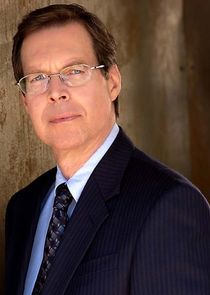
Ivar Brogger
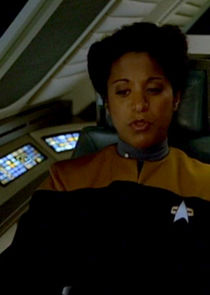
Susan Patterson
Cast appearances.
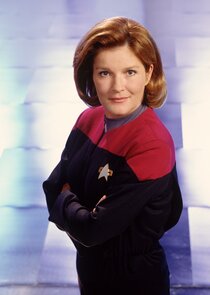
Kate Mulgrew
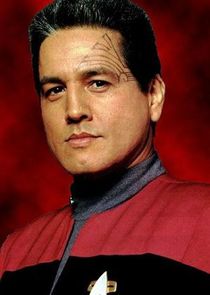
Robert Beltran
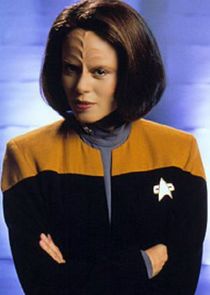
Roxann Dawson
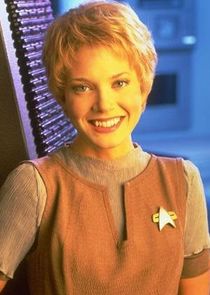
Jennifer Lien
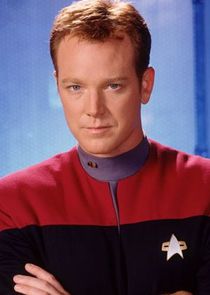
Robert Duncan McNeill

Ethan Phillips
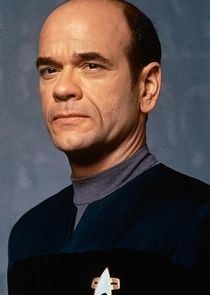
Robert Picardo
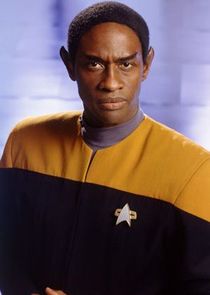
Garrett Wang
Episode discussion.
No comments yet. Be the first!
- The Original Series
- The Next Generation
- Deep Space Nine
- Strange New Worlds
The Star Gazer
Project daedalus, su’kal.

The crew of the Starfleet starship Voyager searches for a way to return to the Alpha Quadrant after being stranded in the Delta Quadrant. In an effort to find the help they need, they come across an unusual species called the Borg. The Borg have been driven mad by a collective consciousness, and the crew must find a way to help them.
When Voyager reaches a planet called Unity, they discover a group of Borg who have been driven to psychosis by a virus. They have split into independent factions, each of which is trying to survive. One faction, led by a former Borg drone named Chakotay, is attempting to build a communication array to contact the Alpha Quadrant, while the other faction is intent on remaining isolated and cut off from the rest of the universe.
The crew of Voyager soon discovers that Chakotay’s faction is actually an ancient species called the Nacene, and that the other faction is comprised of the original Borg. The Nacene are trying to use the communication array to contact their lost homeworld, while the original Borg are determined to prevent them from doing so.
In the midst of all of this, Voyager’s crew must find a way to help both factions. They must find a way to reconcile their differences and heal the rift between them. With the help of Nacene technology and the assistance of the Doctor, the crew finds a way to build a bridge between the two factions. This bridge is constructed of technology and understanding, allowing the factions to finally communicate and understand one another’s perspectives.
With the factions successfully bridged, the crew of Voyager is able to help the Nacene build the communication array and contact the Alpha Quadrant. This opens the door for Voyager to finally return home and for the Nacene to find their lost home, restoring balance to the Collective. In the end, the crew of Voyager learns that, when faced with a difficult situation, they can find a way to bring unity out of chaos.
Related Posts
Equinox (part 2), persistence of vision.
Type above and press Enter to search. Press Esc to cancel.
- Buy the Book…
- Reviews Hub

the m0vie blog

Following Us
- Adding Our RSS Feed to Your Gmail
- Following our Feed in Internet Explorer
- Millennium (Reviews)
- Star Trek: Deep Space Nine (Reviews)
- Star Trek: Enterprise (Reviews)
- Star Trek: The Next Generation (Reviews)
- Star Trek: The Original Series (Reviews)
- Star Trek: Voyager (Reviews)
- The X-Files (Reviews)
- X-Files Fandom Poll Form
Check out the Archives

Awards & Nominations


Star Trek: Voyager – Unity (Review)
The autopsy of the Borg corpse is underway. – Janeway about sums it up
If the third season of Star Trek: Voyager is about the show embracing its place in the shadow of Star Trek: The Next Generation , then it makes sense that the third season would bring the crew into conflict with the Borg. The first two seasons of Voyager had leaned rather heavily upon the mythology of The Next Generation , featuring guest appearances from Q and Riker in Death Wish or Barclay in Projections , not to mention a recurring Cardassian foe and enemies heavily influenced by The Next Generation era Klingons.
However, the first two seasons had made an effort to introduce new and exciting foes for Voyager , new recurring species to reflect that the ship was traveling through an unknown part of space. For all the show featured guest appearances from Romulans and Ferengi, the first two years at least tried to do their own thing. The Kazon might have been a questionable idea horribly executed, but at least they were a new species. The Vidiians were underutilised and remain one of the most fascinating recurring aliens in the entire franchise.

The brains of the operation.
The third season only features a few token appearances of the recurring Delta Quadrant species. The Kazon disappear from the show after Basics, Part II . The Vidiians appear within a nightmarish time loop in Coda . A lost Talaxian pops up on a space station in Fair Trade . However, these aliens are no longer a recurring presence. There is an obvious vacancy that needs to be filled. Voyager needs a new recurring alien species. With that in mind, it is telling that the third season does not create a new alien menace like the Hirogen or the Malon.
The third season of Voyager decides that the Borg are to be the shows recurring adversaries. It makes a certain amount of sense. After all, the Borg are arguably the most iconic and effective aliens created by The Next Generation . They were a massive part of the spin-off really coming into its own with The Best of Both Worlds, Part I and The Best of Both Worlds, Part II . They were also a major part of the hugely successful feature film Star Trek: First Contact . There was definitely an appetite for more Borg stories. There always would be.

Corpsing…
At the same time, the presence of the Borg feels very much like a concession or a surrender. This is Voyager effectively surrendering itself to becoming a pale imitation of The Next Generation , acknowledging that it will never create any alien species as memorable or as iconic as the Borg. That is not an unreasonable thing to accept. After all, Star Trek: Deep Space Nine did fantastic work with the Dominion, but that collection of alien species could never hope to have the same cultural penetration as the Borg.
Still, it is disheartening to see Voyager give up on itself so completely. Indeed, Unity is not even a particularly innovative Borg story, feeling very much like a retread of their last television story in Descent, Part I and Descent, Part II . This is a recurring problem for the third season of Voyager , which has spent a lot of time emulating various Next Generation episodes. However, there is also a sense that Voyager is not terrible at this imitation, even as it is lessened by it. Unity is a flawed episode, but an intriguing one.

Just what every Borg story needs! A Chakotay romance!
Despite the fact that the Borg were the most iconic and memorable alien speices created for The Next Generation , they were employed relatively fleetingly. They appeared in only one episode of each of the show’s final six seasons, with four of those appearances coming in season-bridging cliffhangers. Outside of The Best of Both Worlds and Descent , the Borg only appeared in Q Who? and I, Borg . This is somewhat surprising, given how frequently the Ferengi appeared even after they had been reduced to comic relief.
Of course, there is a reason why The Next Generation tended to stay away from the Borg. It was difficult to tell stories using the Borg Collective. After all, the very things that made the Borg such a compelling antagonist also made it difficult to construct stories around them. The Borg were single-minded and uncompromising, in theory a race without any individual representatives. They could not be developed in the same way as the Klingons or the Cardassians or even the Dominion. Our crew could not negotiate with them or delve into their culture.

The default Borg story was a horror story in which the Borg just kept coming. The Borg were presented as an unstoppable force, and a lot of their power derived from the sense that they were overwhelmingly powerful. However, given the Borg’s single-minded fixation on assimilation and consumption, the Borg could never have an agenda other than destroying or devouring our heroes. Every confrontation with the Borg required the main characters to defeat or outwit them. As a result, every story featuring the Borg tended to diminish them.
This meant that the production team had to find other stories to tell about the Borg Collective, beyond simple invasion narratives. The Best of Both Worlds and First Contact are great stories, but they are great because they stand apart from the rest of the Star Trek canon. They are not stories that can be repeated once or twice a season, because that would quickly become boring. They succeed in part due to their novelty. As a result, the production team had to think very carefully about using the Borg as antagonists.

Ship shape.
The writing staff on The Next Generation was truly phenomenal. The show was home to some of the best writers working in nineties television. However, they could only come up with one obvious narrative to explore the Borg without falling back on the familiar invasion template. Both I, Borg and Descent explored the breakdown of the Collective, with emergence of individuality into what had been a hive mind. It was a clever angle, but the fact that it was the only other angle through which the writers could explore the Borg is somewhat troubling.
The writing staff on Voyager is nowhere near as good as the writing staff on The Next Generation . In fact, the writers on Voyager frequently has trouble with concepts as simple as structuring a teaser, as demonstrated by Warlord or Fair Trade . The production team have a great deal of difficulty structuring narratives to run in parallel across the course of an episode, as demonstrated by Alter Ego . The crew even have difficulty finding the single unifying essence of a narrative, as suggested by Coda . The Deep Space Nine writing staff make all of this look effortless.

Terror, cubed.
If the Next Generation staff could not come up with exciting or original ideas for the Borg, then the Voyager staff were in trouble. To be fair, there are a number of clever concepts seeded across the remaining for seasons of the show that employ the Borg, from the forcing of an alliance in Scorpion, Part I and Scorpion, Part II through to the notion of the heist in Dark Frontier, Part I and Dark Frontier, Part II . However, there is also a lot of repetition. And a lot of that potential is wasted.
Unity begins by reintroducing the Borg through a fairly derivative story, in a manner that feels decidedly clumsy. The return of the Borg should be a big deal. They were the primary antagonists in First Contact , and perhaps the single defining alien species of the Berman era. More than that, Voyager is consciously building towards a gigantic and epic season finale that will through Janeway into the middle of a conflict between the Borg and an even deadlier enemy. Unity should feel like a dark flirtation that sets up ideas that will pay-off down the line.

“Do you have any idea how much power it takes to light a whole damn cube?”
There are any number of examples from the Star Trek canon. The first ominous hints of the Borg in The Neutral Zone , suggesting an enemy powerful enough to scoop entire bases off the face of a planet. The gentle teasing of the Dominion in second season episodes of Deep Space Nine like Rules of Acquisition and Shadowplay . Even that effective final shot of a Borg corpse in the closing moments of Blood Fever . The Borg should exert such a force upon the narrative that it distorts around them. Their shadow should fall over the show.
There are moments when Unity seems to capture this rising dread. The episode takes its time building to the reveal that Riley was abducted and assimilated by the Borg, playing off the rapidly-increasing anxiety. However, the little details begin to add up, and the audience begins to put the pieces together along with Chakotay. It is a clever decision, because it makes the Borg seem ominous and insidious. The crew almost panics at the sight of a single Borg Cube. “Red Alert!” Janeway demands. “All stop, shields to maximum, standby all weapons.”

Squaring it.
However, Unity quickly overplays its hand. Voyager stumbles upon a disabled Borg ship populated by broken drones. This premise allows the characters to beam over to a Borg ship and explore it, without any ominous threat. The Borg are effectively neutered, humbled by the kind of strange interstellar phenomenon that Janeway eats for breakfast. Voyager is putting a lot of faith in the Borg as a potential recurring adversary, but Unity introduces a Borg ship with a flat tire.
The ship comes back to life at the climax of the episode, but the fact that the Borg have been so humbled and that Janeway can get so close diminishes them significantly. Q Who? enabled such exploration and exposition by having the Borg simply ignore the Starfleet crew. Unity opts instead to have this first encounter happen on Janeway’s terms. The mechanics of this episode make it hard to take the Borg seriously as a threat. For all the crew panic on seeing a Borg Cube, the episode still concludes with Voyager surviving an explosion that destroys that same cube.

Blown opportunity.
The Next Generation waited three whole episodes (over a season and a half) to finally destroy a single Borg Cube. That was only at a tremendous cost to Jean-Luc Picard, who was only able to help Data outwit the Borg because he had been assimilated. In contrast, Voyager is crippling and blowing up Borg Cubes within the same episode that it reintroduces the Borg Collective. It is somewhat disappointing, particularly when the episode revolves around a group of individuals breaking free of the Borg.
To be fair, Unity is a perfectly good opportunity to carefully seed the idea of Species 8472. After all, a disabled Borg Cube is a terrifying prospect if it has been humbled by some mysterious force even more powerful. Torres seems to suggest as much in the briefing. “It could have been some kind of natural disaster, or…” Torres trails off. When Kim presses, she finished the thought. “Maybe the Borg were defeated by an enemy even more powerful than they are.” In theory, this is a nice set-up for the reveal that will come in the teaser to Scorpion, Part I .

“I’ll never love another Borg drone again. Well, probably. Unless the writers haven’t paired me off by the end of the series.”
However, Unity declines to commit to this set-up. It is not a sly nod to the arrival of Species 8472. It turns out the Borg Cube was disabled by a purely natural phenomenon. Explaining how the drones on the planet came to reclaim their individuality, Riley states, “Five years ago, our ship was damaged by an electrokinetic storm.” This is somewhat underwhelming. It makes the Borg seem a great deal less threatening than they might otherwise, suggesting that they can be stopped by a bit of bad weather rather than a more advanced adversary.
To be fair, there are any number of reasons that Unity might not want to foreshadow the arrival of Species 8472. In purely continuity terms, Scorpion, Part I and Scorpion, Part II suggest that the conflict between the Borg and Species 8472 is relatively recent. In more practical terms, it makes sense to take the time to establish the Borg as a credible threat before introducing an even greater threat. After all, making the Borg seem like an impossible adversary would only serve to make Species 8472 seem like a much bigger deal.

Engineering a sense of dread.
However, the third season of Voyager somewhat botches the reintroduction of the Borg. In Unity , the Borg appear vulnerable. Their ship is disabled by a freak interstellar phenomenon and destroyed by a bunch of rebels. Even outside of Unity , the third season does very little to create a sense of mounting dread or anxiety as Voyager edges closer and closer to the Borg Collective. Compare this to the sense of dread that permeates the second half of the fifth season of Deep Space Nine , as war with the Dominion becomes increasingly inevitable.
Instead, the third season of Voyager continues on after Unity as though this is business as usual. Distant Origin is a standard Star Trek allegory. Displaced is an adventure of the week. Favourite Son is a ridiculous story about a ridiculous alien species. Darkling and Rise even have the crew encounter several interstellar alien species that must be living in the shadow of the Borg Collective, but do not seem too bothered by it all. There should be a sense of mounting anxiety, as Voyager comes closer and closer to facing an unstoppable foe. Instead, there is nothing.
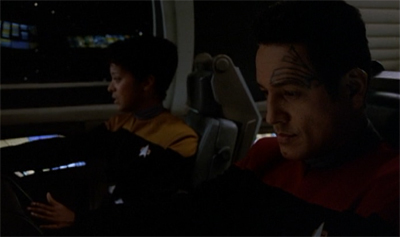
Flying in circles.
This is a recurring problem with Voyager . The show is willing to introduce big ideas, but lacks the will to follow through on them. Fair Trade teased the idea that Voyager would finally be venturing into unfamiliar and unpredictable territory, putting a clear barrier between what came before and what came after. The Nekrit Expanse was supposed to be exotic and exciting. Instead, it was more of the same. “You know, they ought to rename this region the Negative Expanse,” Paris complains. “We haven’t run across anything interesting for days.”
It could be argued that placing the Borg within the Nekrit Expanse represents a betrayal of everything that strange region was supposed to represent, replacing familiar and tired Voyager aliens with familiar and soon-to-be-tired Star Trek aliens. Similarly, the way that Voyager treats the Borg represents a betrayal of the Borg themselves. The Next Generation treated a single Borg Cube as a threat to the entire Federation. Voyager repeatedly has a lone Starfleet vessel humble the entire Borg Collective.

Staring down the barrel.
Still, allowing for all of this, there is a sense in which Unity works. Like Coda before it, it is a highly derivative story. Whereas Coda drew upon everything from Cause and Effect to Tapestry , Unity plays as a retelling of Descent, Part I and Descent, Part II . Much like Coda , Unity works reasonably well because it condenses a familiar idea. It rushes through ground that has already been covered. While the episode is far too familiar for its own good, at least there is a sense of momentum and drive to it.
It helps that Descent, Part I and Descent, Part II never quite capitalised on their “breakdown of the Collective” narrative. This was largely because the two-parter was keenly focused upon Data and Lore, to the point that the Borg were essentially treated as Lore’s muscle with a little exposition exploring the consequences of I, Borg . So while Unity is dealing with similar themes, it is able to streamline its exploration of them. Unity removes a lot of the clutter that clouded Descent, Part I and Descent, Part II .

Collective concerns.
Unity also exists very much within the existing framework of Voyager . More than any of the other spin-offs, Voyager was a very nineties piece of television. It was rooted in the decade in a way that Deep Space Nine was not. Tellingly, Voyager travelled back to the present day several times over the course of its run for episodes like Future’s End, Part I , Future’s End, Part II and 11:59 , while The Next Generation and Deep Space Nine both avoided returning to contemporary Earth.
Deep Space Nine tended to look beyond the nineties for inspiration, which may explain why the series has aged much better than Voyager . In contrast, Voyager was always very firmly rooted in the social context of the nineties. This is perhaps best reflected in the way that the series approached the politics of the Delta Quadrant. While the Alpha, Beta and Gamma Quadrants were dominated by large interstellar empires, the Delta Quadrant frequently felt like a post-colonial wasteland occupied by minor (and decaying) powers.

Borg again.
Voyager looked at the universe from a perspective informed by the end of the Cold War. There were no more evil empires, merely local skirmishes. Writer Kenneth Biller has framed Unity in those terms, arguing that it is a Borg story for the end of the Cold War :
Unity is another episode I enjoy because it explores a new aspect of the Borg. It was sort of a commentary on the fall of communism and an interesting perspective on it.
This makes a certain amount of sense, given that the Borg have often been read as avatars of communism. Of course, the Borg are flexible enough that they might also be read as a criticism of capitalist excess. Indeed, Unity could perhaps be read in that light as well. It is ultimately the story of a cultural collapse and decay.

A panel decision.
Cultural collapse is very much the default narrative for the Delta Quadrant. The Kazon are a race of former slaves flying through space using technology that they stole from their deposed masters. The Vidiians are a once great race eroded by a deadly disease. The Hirogen are a race without any centralised authority, packs of roving hunters. The Malon are a culture defined by their wastefulness and their decay. Even the Krenim are consistently and repeatedly rewriting and revising their own history. Voyager is not a show that believes in empires.
In many ways, this reflects the political landscape of the nineties. Much like Voyager ‘s fascination with temporal continuity and stability suggests the static world order promised by “the end of history” , the political framework of the Delta Quadrant evokes “the unipolar moment.” The series was written and broadcast at a point in time with the United States was the only global superpower, watching the collapse of the Soviet Union and countless brutal skirmishes in developing and emerging nations.

Some assembly required.
During the nineties, the collapse of the Soviet Union and the end of the Cold War ushered in an era of peace and prosperity in the developed world. However, as Amitav Acharya argues in Third World Instability and International Order After the Cold War , the end of the Cold War tended to spark internal conflicts among developing nations:
A recent survey of the world’s conflicts found that of the 23 wars being fought in 1994, all but five are “based on communal rivalries and ethnic challenges to states.” According to this study, ethnic conflict accounts for about three quarters of the world’s refugees (some 27 million people), while of the 13 peacekeeping operations recently undertaken by the UN, 8 involve situations of ethnopolitical conflict. Such data has formed the basis of the view that ethnic conflicts are a major aspect of the so-called decompression effect. The end of the Cold War has been linked to the outbreak of ethnic conflict, since in many parts of the Third World, it meant “the removal of ideological models that ha[d] offered uniting symbols of nation-building in countries that would otherwise be torn apart by ethnic, cultural, religious, or linguistic differences.”
There was a sense that the breakdown of established international ideological structures allowed pre-existing ethnic and social divisions to rise to the surface. Without the Cold War to keep these divisions in check, developing countries were more likely to collapse into civil war.

Dead drone.
There are countless examples of this political fallout during the nineties, with one large ideological conflict giving way to countless smaller local wars. There is a clear line to be drawn between the end of the Cold War and the conflicts on the African continent during the nineties, including the Rwandan Genocide and the wars in the Congo . The world watched Yugoslavia collapse into roughly a decade of wars and struggles following the fall of the Berlin Wall .
Although the nineties were a period of relative stability for the United States and Europe, there was a sense that the rest of the world was a lot less stable; unrest in Haiti , the Zapatista Uprising in Mexico , the Chechen Wars involving Russia , civil war in Nepal , the war between India and Pakistan over Kashmir . To an American or European observer, the world seemed to be caught up in a variety of (relatively) small-scale conflicts about old divisions that had resurfaced with the defeat of Ronald Reagan’s “Evil Empire.”

Deep dreaming.
Unity essentially channels this anxiety into a story about the Borg. Unity is a tale about the breakdown of the Borg Collective, using that as a metaphor for the collapse of the Cold War power structures. It is the tale of a monolithic collective that has been broken down into many different parts. “There are dozens of different races on this planet, all of whom were brought here against their will,” reflects Riley. “Many of them are suspicious of other species. It’s not exactly a United Federation around here, if you know what I mean.”
The result is the complete breakdown of social order, albeit on a much smaller scale that Star Trek would normally explore. While the franchise tends to explore conflicts between interstellar powers, Unity touches on the conflict brewing between a once-united people. “Resources are pretty limited,” Riley explains. “It didn’t take long for the fighting to start. At first a group of Klingons attacked the Cardassians, then the Farn raided the Parein. Eventually things just got out of hand, and now it’s anarchy.”

In the wasteland.
This is quite heavily likened to the collapse of communism. The conflicts perhaps mirror the strife in the Balkans or in Chechnya. While the world welcomed the fall of the Berlin Wall and the end of the Union of Soviet Socialist Republics, there was always the question of what would follow. “After the euphoria wore off, people started looking around and found they were living among other cultures they didn’t understand, or worse, species they’d been taught to hate. They turned against one another. Things became chaotic.”
However, as with many of the best Borg stories, there is a sense that Unity is also about more than just the collapse of communism. In some ways, the episode could be seen to reflect certain anxieties in the developed world following the end of the Cold War. The Borg Collective is not simply a stand-in for communism, it more broadly reflects a singular sense of purpose and identity. While the social and political strife on the planet undoubtedly mirrors the conflicts raging in the developing world, Unity touches upon a broader social malaise.

“Maybe we can ask for directions.”
As the rest of the world seemed to fall into patterns of conflict and social strife, the developed world became increasingly isolated and disconnected. As historian David Halberstam reflected on the nineties, there was a creeping sense of anomie :
But the least predictable thing, the thing that surprised me most, was that society started binging on self-absorption. We’ve had the trivialization of the political, and the media heralded the rise of all these trivial things, with its absolute obsession with gossip, celebrity and scandal. The networks were pulling back their foreign correspondents.
Without an external conflict by which it might define itself, the developed world turned its gaze inwards. America seemed to be consumed by existential and spiritual crises, reflected in the sort of New Age philosophy that Voyager explored in episodes like Tattoo or Sacred Ground .

Riley bad decisions.
During the nineties, American popular culture seemed anxious and uncertain. These uncertainties were perhaps best reflected in shows like The X-Files . There was a recurring concern that reality was in someway broken, with the late nineties increasing obsessed with the theme of unreality channeled through movies like Dark City , The Matrix , eXistence , The Truman Show and The Thirteenth Floor . They also bled through into Voyager , which embraced the concept of the holodeck episode more readily than any other Star Trek show.
Unity touches upon these first world anxieties in its handling of the Borg Collective. The Borg Collective offers a sense of oneness and purpose. To this point, the Borg Collective has been presented as something truly horrific, a violation of an individual’s identity and uniqueness; consider Jean-Luc Picard’s account of his experience with the Borg in Family . However, Unity offers a more idealised and romantic approach to the Borg Collective. Indeed, the episode suggests that the Borg Collective might be a welcome answer to loneliness or isolation.

“I’ve got a real live Chakotay doll. He’s so lifelike!”
Unity offers a decidedly New Age interpretation of the Borg Collective. “The Borg collective consciousness is extremely powerful,” Orum explains. “It allowed us to transfer information instantaneously, to think with one mind. But what you may not be aware of is the link also has inherent medical applications.” The Borg Collective is presented as a sort of spiritual “oneness” , a joining of minds that is to be welcomed and embraced. Certainly, Chakotay has a much different experience than Picard.
Waking up after one such experience, Chakotay reflects, “It was incredible.” Of course, it makes sense that Chakotay would be the character to be taken in by this approach to the Borg. Chakotay is very much a walking New Age cliché. “I heard all of you, your thoughts inside my head, as if they were my thoughts. And I could see myself through your eyes.” It sounds wondrous. “I saw faces, planets. What were they?” He went on a journey, in his mind. Riley answers, “Images from the minds of the people who linked with you. Memories of their families, their homes.”

“All I need to do is just turn back on the Borg wifi.”
This is perhaps the most nineties interpretation of the Borg imaginable. It is fascinating, even as it runs counter to the horrors presented dating back to Q Who? At the same time, Unity feels decidedly half-hearted. The episode hedges its bets, trying to have its cake and eat it. Unity would be a far more interesting story if it had the courage of its convictions, if it were willing to actually explore the breakdown of the entire Borg Collective rather than simply the breakdown of a single Borg Cube that had a freak accident.
After all, First Contact ended with the death of the Borg Queen. Of course, the Borg Queen had apparently been on board the Borg Cube destroyed in The Best of Both Worlds, Part II , but it would not be too difficult to treat the death of the Borg Queen at the end of First Contact as the end of the Borg Collective. What would happen when all those drones finally woke up? Would they fight among themselves? Would some try to reimpose the Borg Collective? Unity plays out this story in miniature, but it feels like the episode lacks the boldness to tell a truly provocative Borg story.

“And we can all share the same Netflix account again…”
Of course, the Borg were far too popular for Voyager to ever change them in a meaningful manner. Voyager was far too conservative a show to attempt something so bold. In contrast, Deep Space Nine was willing to radically tweak the Cardassian Union over its seven-year run, exploring the rise and fall of an imperial power. So Unity feels very much like a half-measure. It is a story that would have made for a compelling (and innovative) long-form story that is condensed down to a simple and straight-forward forty-five minutes of television.
That said, there is something very reactionary in the way that Unity approaches the idea of the Borg Collective. The link in Unity is portrayed as much less invasive and much more democratic than the Borg Collective had been in earlier episodes. Nevertheless, Janeway reacts to the concept with fear and trepidation. She is instinctively repulsed by Riley’s suggestion that Chakotay could reconnect the Borg network from the Cube. Naturally, Janeway’s misgivings turn out to be well-placed, as Riley uses the link to exploit Chakotay and impose her will on others.

Keeping Chakotay in the dark about their intentions.
Riley’s plan is deliberately framed as something monstrous. “Not only would it mean imposing a choice on thousands of people who had no voice in the decision, but it would also be taking a terrible risk,” Janeway states. “Helping to create a new collective. Who knows what the repercussions might be?” There is never any discussion about the possibility of making the link voluntary. It is anti-democratic and alien, something inherently hostile to everything Janeway holds dear.
To be fair, this is very much in keeping with larger anxieties within the Star Trek franchise. Dating back to Where No Man Has Gone Before , the Star Trek franchise has been deeply uncomfortable with transhumanism. The franchise is weirded out by concepts like evolution ( Genesis , Threshold ), genetic engineering ( Space Seed , Unnatural Selection ), or artificial intelligence ( What Are Little Girls Made Of? , I, Mudd ). For television shows featuring ships travelling faster than the speed of light, Star Trek is often uncomfortable with any major leaps forward in terms of technology.

“Time to make the Federation great again.”
However, there is more to it than that. Unity is a story about the collapse of global order following the end of the Cold War. The idea of a “new collective” must be read in that light, in terms of moves towards more stable international political structures. As such, Unity plays like an anti-globalisation screed. It is an episode that plays into many of the tropes and clichés of the anti-globalisation movement, presenting moves towards international unity as the manoeuvring of sinister self-interested cabals with no respect for personal autonomy.
Unity hints at some sense of even-handedness or ambiguity, but rather bluntly shrugs off that idea. “I don’t know,” Janeway states. “I’m not saying I’m happy about what happened, but so far they haven’t acted like typical Borg. They saved us from that Cube, and they let you go.” Chakotay doesn’t buy it, “But they didn’t hesitate to impose their collective will on me when it served their interests, did they?” Adopting a sense of moral superiority, he rhetorically muses, “I wonder how long their ideals will last in the face of that kind of power.”

Stunning betrayal.
Given that the nineties witnessed extensive debate over the growth of the European Union and the expanding reach of the United Nations , this feels like a very charged conclusion. Unity plays into the stock anti-globalisation rhetoric about how globalisation leads to international elites imposing their will upon hardworking individuals. The Delta Quadrant might be in a state of chaos and disarray, but Unity rejects the idea of any emerging collective consciousness as more horrifying and unsettling than the conflicts that are actually raging.
It is the kind of narrative that feels particularly toxic from the perspective of the twenty-first century, recalling the narrative of nationalist movements like Brexit and Trump . Boris Johnson campaigned in favour of Brexit by urging voters to “take back control” that had presumably been surrendered to some larger entity . Donald Trump railed against international agreements, insisting that “the special interests will remain firmly in control” unless he wins . This is very much the argument advanced by Unity , with Riley standing in for any globalisation movement.

This is in keeping with the relatively conservative philosophy of Voyager . The Star Trek franchise has cultivated a reputation for liberal political and moral philosophy, but the reality is far more complex. There are points at which Voyager feels positively reactionary in its third season, as demonstrated by horribly sexist narratives like The Q and the Grey or Alter Ego . However, there are broader conservative themes playing out. Unity is an anti-globalisation story, while Displaced is an anti-immigration parallel. Both are deeply uncomfortable pieces of television.
Unity is also notable as the second episode of Voyager to be directed by actor Robert Duncan McNeill. The actor had helmed Sacred Ground late in the second season, although the broadcast of the episode was held over until the start of the show’s third year. This is a very big episode to entrust to such an inexperienced director, and McNeill acquits himself rather well. Unity looks and feels rather impressive, even if the Borg look slightly less imposing back on a television budget than they did on the big screen in First Contact .

“Don’t worry. There is no chance that Janeway will actually hold me accountable for this.”
In an interview with Starburst , McNeill credited the success of Sacred Ground with landing him the gig directing Voyager ‘s first Borg episode:
Part of it was that they were extremely happy with Sacred Ground, and the other part was just luck. I was not so much frightened that the episode was about the Borg, as I was because of what the story was about. With the Borg there’s a certain expectation that the audience have because they are the ultimate bad guys. Previously there has been no humanity in them and this episode introduces a whole new concept about them — the fact that they can be de-assimilated. They have a one-dimensional quality of pure evil, technology and humanity combined into this one machine, and in Unity we crack that armour and show that they could be destroyed, whether by a natural disaster or a virus, or whatever.
At the same time, McNeill points to the problems with the episode. The Borg do not need their armour cracked at this point.

Getting inside Chakotay’s head.
Unity is not a bad episode of itself, it just has a lot of significant problems from the basic concept through to the underlying themes. It is not a bad Borg episode, despite the half-hearted nature of the execution and the uncomfortable anti-globalisation subtext upon which it insists. The bigger problem is the manner in which it attempts to introduce the Borg into Voyager . The Borg should arrive on the series in a position of strength. Unity feels more like the beginning of an extended four-year autopsy.
You might be interested in our other reviews from the third season of Star Trek: Voyager :
- Basics, Part II
- False Profits
- Sacred Ground
- Future’s End, Part I
- Future’s End, Part II
- The Q and the Grey
- Blood Fever
- Favourite Son
- Before and After
- Distant Origin
- Worst Case Scenario
- Scorpion, Part I
Share this:
Filed under: Voyager | Tagged: borg , janeway , star trek , star trek: first contact , unity |
13 Responses
I haven’t been able to confirm this outside of sfdebris’s review of the episode, but it seems like this episode was such a disappointment, that it ultimately caused Scorpion into being. This would probably best explain why there’s no foreshadowing to the events of Scorpion because they were not planned until the last minute.
(Scorpion – Memory Alpha) “This installment was not the first choice for the finale of Star Trek: Voyager’s third season, a fact that even CGI Effects Director Ron Thornton became aware of (despite his purview being quite different from that of Voyager’s writing staff). (The Official Star Trek: Voyager Magazine, issue #16, p. 37) Originally, “Year of Hell” was planned to be Voyager’s third season finale but, with the choice made to shake up the cast in Season 4, this episode was the result. (Star Trek Monthly issue 34, p. 12; Delta Quadrant, p. 207) This episode also replaced an undeveloped story idea that featured biomimetic lifeforms, doppelgängers of the Voyager crew, arriving at Earth to much enthusiastic furore before then causing havoc on the planet; although Joe Menosky and Brannon Braga started to collaborate on scripting that plot, dissatisfaction with the writing of the teleplay resulted in the writing duo instead turning their attentions to the “Scorpion” project. The same aliens who appeared in the unfinished script ultimately featured in Season 4’s “Demon” and the fifth season installment “Course: Oblivion”. (Cinefantastique, Vol. 31, No. 11, p. 49) ”
So it would seem that the reception of this episode shocked the Voyager staff to the core, which resulted in immediate changes to the plans for the season and the show itself. All for the better it seems, as Year of Hell would have suffered if it was a season ending cliffhanger, since the writing staff most likely would not have written both parts at the same time. And if Demon had been the season finale, this might have put Voyager in a early grave.
When I think on it, “Scorpion” is one of the strangest episodes of Voyager since so much of what goes on in those episodes is antithetical to Voyager as a show. The show itself had abandoned it’s premise long ago already, and yet, suddenly they bring back “strained relations between the Maquis and Starfleet crew”, character conflict, forming alliances in the Delta Quadrant, story continuity with Unity, a shake up of the cast, and serious long-term consequences that will reverberate through the rest of the show, with the addition of Seven and previous victims of the Borg showing up to hold Voyager responsible for it’s actions. When you think of quintessential Voyager, that isn’t it. I daresay it gives Best of Both Worlds a run for it’s money.
As for Unity itself, it does seem like a massively disappointing way to introduce the Borg. Imagine if we got subtle hints of the Borg, letting the dread build and build until so that the very first time we see the Borg is in Scorpion’s teaser with “Resistance is futile” before the cubes get annihilated, that would have the greatest twist in Star Trek. Unity itself doesn’t seem bad though, so I can’t help but wonder if it were more fondly looked upon if it happened after Scorpion, dealing with the aftermath of the S 8472 war.
Yeah, the original plan for the third season finale was Year of Hell, Part I. But I believe the retool came about because Brannon Braga came up with the idea of Seven of Nine and the network wanted a big shakeup. Kinda like what happened with the third season finale on DS9, where the studio told the production team they wanted to shake things up right before the production team were about to start work on Homefront as the season finale.
The third season of Voyager is always fun to contrast with the fifth season of DS9, if only because they try so many of the same things, but Voyager lacks the follow-through and commitment that elevates DS9. Imagine if the arrival of the Borg at the end of the season had been treated with the same sense of dread as the looming Dominion War. That would have been spectacular. But instead it’s back to business as usual the very next episode.
You know I have to give the writers some credit. The random goldshirt who is killed of in the beginning was actually somewhat likable. I remember when I first saw the episode I thought she might be a new recurring character. Then again, maybe it was just because she was acting with Robert Beltran, not exactly the king of charisma. I do like this episode quite a bit in a vacuum, but I do agree with your points about how it suffers in context. I do think though it might have been interesting if they had tried to connect these drones with Hugh’s rebellion from Descent. It’s not like Voyager was ever shy of having connections with its older sibling, TNG, which stands in stark contrast to TNG’s relationship with TOS in which even say the word, Spock, was a battle.
Ha! I really disliked Voyager’s tendency to randomly off supporting characters, as if they came from the same magical industrial replicator that must have manufactured the show’s shuttle craft.
Yeah, like what they did with Hogan. His death still steams me to this day.
I have to say I liked this a lot more than you seem to Darren, though that might be because I like Borg less I (ironically) have far less of a problem with seeing them humbled. Really I don’t think this is Voyager’s fault; in every appearance in the TNG the Borg have slipped from their might. In ‘I, Borg’ the possibility that Picard can bring the entire Collective to its knees is seriously entertained and ‘Descent’ even suggests the Collective has in fact collapsed. In ‘First Contact’ the Federation is able to destroy a Borg cube through sheer firepower and tactics. Maybe, as you say, the Voyager writers lack the skill of the TNG ones but they were only continuing an established trend.
I don’t want to turn this in an overly political debate but there are many, many with liberal and left politics with an anti-globalisation slant; look at Bernie Sanders or Jeremy Corbyn, or the far left in the Dáil who hate the EU and Nato at least as much as Nigel Farage does.
Yep, that’s a fair point about the anti-globalisation left.
But I don’t think Voyager is coming from that angle, at least based on the episodes around it. (I’m thinking particularly of Displaced. But its gender roles and attitudes to sex are horribly outdated as well.)
Unity was broadcast (deliberately?) during sweeps week so it makes sense for Voyager to bring the Borg, Star Trek’s most popular species back at this time. And it was something borne out with Unity seeing more than five million viewers tuning in that week compared to Voyager’s usual four million (it’s still pitiful compared with TNG’s 10 million regular weekly viewers). But it’s frustrating that Unity’s two best scenes, the Borg autopsy and the reactivation of the Cube end in two big anticlimaxes.
I do like the scene in the Ready Room where Janeway’s head is framed on Chakotay’s shoulder. She is obviously jealous of Riley’s link with him (another doomed Chakotay romance) and at this time the writers were still entertaining the notion of Janeway and Chakotay as a future couple before abandoning that as Chakotay (ironically) winds up with another ex-Borg, Seven of Nine. And I do like the ambiguous implications of the new Borg Cooperative. Janeway may have felt they acted out of character but forcing their collective will on Chakotay to achieve their aims is a very Borg thing to do.
You called the Krenim the Kremin Darren.
Damn those trick m and n switches! Good catch, corrected.
Yeah, I hate the autocorrect function. They should rename it because it always gets it wrong.
Nah, I’ll concede that was down to human error; the “n” and the “m” keys being close together, and the phonetic similarity between “Kremin” and “Krenim.” Easy mistake to make, but the technology at fault was biological in nature. 🙂
You can certainly tell that the Voyager writers never really did things like sit down as a group at the beginning of a season and map out general plot arcs, directions, and end-points. If they did this, like say in a multi-day retreat, they could have done more interesting things. The shattered collective idea would have been fascinating, especially given the bad-ass freed Klingon Borg captain who appears in a later episode.
But even if they are going to keep the Borg intact, they should have been seeding season three and even maybe season two with civilizations and worlds ruined by Borg assaults and assimilations. There should have been an increasing drum-beat of smouldering planets, craters, starship graveyards, and frightened survivors warning Voyager to turn back. The slow drip of tension would have made the final arrival in Borg space that much more dreadful and cool.
For all this episode’s flaws I do have a bit of a soft spot for it. It’s interesting to explore the concept that there is something positive to be said for the Borg experience, and that a transhumanist aspiration must not necessarily be bad. Probably could have explored that more deeply, but such is Voyager.
I will say facing imminent death is a bit of a mitigating factor in their decision to involve Chakotay in the end, weird that the closing monologue doesn’t seem to consider this.
Another interesting idea that doesn’t go properly explored is the idea that no governmental power structure is formed with unanimous consent. One faction will always win out against another. As Star Trek: Enterprise will show they couldn’t form the Federation without dealing with a number of competing factions.
Leave a comment Cancel reply
This site uses Akismet to reduce spam. Learn how your comment data is processed .
Recent Posts
- 373. Pirates of the Caribbean: The Curse of the Black Pearl (#225)
- 371. Poor Things (#246)
- 370. Dune: Part Two (#12)
- 369. Memento (#57)
- 368. Monty Python and the Holy Grail (#154)
Recently tweeted…
- "I Simply Am Not There": The Existential Horror of Eighties Excess in "American Psycho"...
- X-Men: Operation Zero Tolerance (Review/Retrospective)
- Star Trek: Deep Space Nine (Reviews)
- Adding Our RSS Feed to Your Gmail
Available at…

Blogs Well Worth Your Time
- 1001 Must See Films
- Andrew at the Movies
- Anomalous Material
- Cut the Crap Movie Reviews
- Encore Entertainment
- Fandango Groovers
- FlixChatter
- Four of Them
- It Rains… You get Wet…
- Jameson Cult Film Blog
- Jar Watches Films
- Let's Go To The Movies
- M. Carter at the Movies
- Marshall and the Movies
- Movie News First
- Musings from a Man Lost in La Mancha
- Never Mind Pop Film
- Paragraph Film Reviews
- Roger Ebert's Journal
- Ross v. Ross
- Scannain.com
- Screenwriter (Donald Clarke, Irish Times)
- Strange Culture
- The Film Cynics
- The Pompous Film Snob
- The Projection Booth
- Things That Don't Suck
- Too Busy Thinking About My Comics
- Undy a Hundy
Film Nerd Resources
- CinemaBlend (News)
- Internet Movie Database
- Rope of Silicon
- The Guardian Film Blog
- James Berardinelli
- Roger Ebert
Email Subscription
Enter your email address to follow this blog and receive notifications of new posts by email.
Email Address:
Sign me up!
Blog at WordPress.com. WP Designer.
- Already have a WordPress.com account? Log in now.
- Subscribe Subscribed
- Copy shortlink
- Report this content
- View post in Reader
- Manage subscriptions
- Collapse this bar
Log in or sign up for Rotten Tomatoes
Trouble logging in?
By continuing, you agree to the Privacy Policy and the Terms and Policies , and to receive email from the Fandango Media Brands .
By creating an account, you agree to the Privacy Policy and the Terms and Policies , and to receive email from Rotten Tomatoes and to receive email from the Fandango Media Brands .
By creating an account, you agree to the Privacy Policy and the Terms and Policies , and to receive email from Rotten Tomatoes.
Email not verified
Let's keep in touch.

Sign up for the Rotten Tomatoes newsletter to get weekly updates on:
- Upcoming Movies and TV shows
- Trivia & Rotten Tomatoes Podcast
- Media News + More
By clicking "Sign Me Up," you are agreeing to receive occasional emails and communications from Fandango Media (Fandango, Vudu, and Rotten Tomatoes) and consenting to Fandango's Privacy Policy and Terms and Policies . Please allow 10 business days for your account to reflect your preferences.
OK, got it!
Movies / TV
No results found.
- What's the Tomatometer®?
- Login/signup
Movies in theaters
- Opening this week
- Top box office
- Coming soon to theaters
- Certified fresh movies
Movies at home
- Fandango at Home
- Netflix streaming
- Prime Video
- Most popular streaming movies
- What to Watch New
Certified fresh picks
- Challengers Link to Challengers
- I Saw the TV Glow Link to I Saw the TV Glow
- Música Link to Música
New TV Tonight
- Dead Boy Detectives: Season 1
- The Jinx: Season 2
- The Big Door Prize: Season 2
- Them: Season 2
- Knuckles: Season 1
- Velma: Season 2
- Secrets of the Octopus: Season 1
- Thank You, Goodnight: The Bon Jovi Story: Season 1
- We're Here: Season 4
Most Popular TV on RT
- Baby Reindeer: Season 1
- Fallout: Season 1
- Shōgun: Season 1
- Ripley: Season 1
- Under the Bridge: Season 1
- 3 Body Problem: Season 1
- We Were the Lucky Ones: Season 1
- Best TV Shows
- Most Popular TV
- TV & Streaming News
Certified fresh pick
- Dead Boy Detectives: Season 1 Link to Dead Boy Detectives: Season 1
- All-Time Lists
- Binge Guide
- Comics on TV
- Five Favorite Films
- Video Interviews
- Weekend Box Office
- Weekly Ketchup
- What to Watch
All Zendaya Movies Ranked by Tomatometer
Video Game TV Shows Ranked by Tomatometer
What to Watch: In Theaters and On Streaming
Awards Tour
Poll: Most Anticipated Movies of May 2024
Poll: Most Anticipated TV and Streaming Shows of May 2024
- Trending on RT
- Challengers
- Boy Kills World
- Marvel Movies In Order
- Play Movie Trivia
Star Trek: Voyager – Season 3, Episode 17
Where to watch, star trek: voyager — season 3, episode 17.
Watch Star Trek: Voyager — Season 3, Episode 17 with a subscription on Paramount+, or buy it on Fandango at Home, Prime Video, Apple TV.
More Like This
Cast & crew.
Kate Mulgrew
Capt. Kathryn Janeway
Robert Beltran
Roxann Dawson
B'Elanna Torres
Robert Duncan McNeill
Jennifer Lien
Ethan Phillips
Episode Info
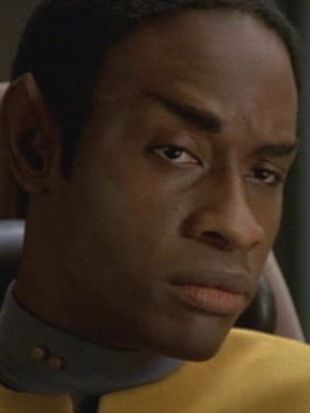
Produced by
Star trek: voyager : unity (1997), directed by robert duncan mcneill.
- AllMovie Rating
- User Ratings ( 0 )
- Your Rating
- Overview ↓
- User Reviews ↓
- Cast & Crew ↓
- Related ↓
- Show Spoilers
- Night Vision
- Sticky Header
- Highlight Links

Follow TV Tropes
http://tvtropes.org/pmwiki/pmwiki.php/Recap/StarTrekVoyagerS3E16Unity
Recap / Star Trek Voyager S 3 E 16 "Unity"
Edit locked.

Ensign Kaplan and Chakotay are returning in a shuttle from a mission to scout an area of space known as the Nekrit Expanse. The local conditions are presenting some navigational challenges for them. When they eventually pick up a Federation signal, they are surprised to discover that it is not coming from Voyager , but from a nearby planet with a settlement of over 80,000 humanoids. Whoever is calling them knows they're from the Federation, and they're requesting their help.
They leave a message buoy behind for Voyager and follow the signal, but their first impression of the planet's inhabitants isn't encouraging. Several robed aliens open fire on them soon after they land. A second group arrives to drive them off, but not soon enough to stop Chakotay from being knocked out by an energy weapon.
When he comes to, he finds a human woman watching over him. She introduces herself as Riley Frazier, the one who sent the distress signal. She also tells Chakotay that Ensign Kaplan didn't make it , and that his shuttle has been stripped down to the bulkheads by the scavengers who attacked him.
Chakotay is obviously curious how Riley found herself on this distant planet, which is populated by a wide variety of aliens, some familiar and some not. She says they all have the same story: they were attacked in space and abducted by an unknown species who put them into stasis and dropped them here, alone, for no apparent reason. Some of these unwilling transplants live peacefully together, while others, as Kaplan found out the hard way, do not. Chakotay is eager to help them repair their damaged communications array so he can contact Voyager , but Riley insists that he rest out of concern for the neural damage he suffered during the firefight.
Meanwhile, Voyager has encountered a derelict Borg cube. It's not clear what misadventure deactivated the drones aboard, but Janeway sees it as an opportunity to learn more about their technology.
Despite his host's seemingly pure intentions, Chakotay's locked room makes him feel more like a prisoner than a guest. He manages to hack the door open and into a courtyard filled with makeshift structures. Nothing seems particularly suspicious, until he comes across a group of locals, including Riley, and sees that they wear a number of Borg implants.
Riley is quick to admit that her original story wasn't entirely true. It was the Borg who abducted and assimilated the planet's populace, and it was only after their cube was hit by an electrokinetic storm five years past that they were severed from the collective and regained their individuality. They settled on this planet, but before long the cultural differences between the widely disparate species created hostilities that persist to this day.
But Riley insists that she was honest about the Cooperative's desire to create a peaceful, lasting community. As an example, she introduces her friend Orum, a Romulan who has long since abandoned his mistrust of humans. They didn't send the distress signal to be rescued, but to enlist Voyager 's help in protecting themselves from their attackers.
Unfortunately, Chakotay is still struggling from his earlier injury, which Orum believes will ultimately be fatal if left untreated. With their limited resources, there is only one treatment they can offer. The Borg collective, Orum explains, can transfer neural energy between drones as a means of repairing injury. As they all still have their neural processors from when they were assimilated, they could temporarily join themselves with Chakotay to heal him. Chakotay is understandably resistant to this idea, despite their assurances that it would be completely non-invasive, but his deteriorating condition eventually compels him to reconsider.
They begin the procedure. The eerie voice of the collective that we all know so well fills Chakotay's thoughts, but their comforting words are a stark contrast to the Borg's usual rote imperatives.
Cooperative: Open your mind to our thoughts and concentrate on getting well. Hear our voices. Open your mind to our thoughts. Our collective strength can heal you. You're safe with us. Feel the connection. We're with you. See who we are. Know us. You're not alone. Our strength is your strength. We can overcome your pain. We welcome you into our thoughts. There's nothing to fear. We won't let you die. We're all one circle—no beginning, no end...
Chakotay once again wakes up with Riley watching over him, this time feeling much better, and not just physically. The thoughts and memories he shared with them, combined with the residual link, has radically changed his perspective of the Cooperative. Through the link, he also learned their real plan for solving their little civil war.
Voyager has arrived at the planet by now, having found the message buoy left behind by Kaplan. Janeway listens to Riley's request, which is for them to temporarily reactivate the derelict Borg cube's neuroelectric field generator long enough to establish a collective link, similar to the one Chakotay joined, but permanently and for the entire population. For all the trauma they caused, the Borg's hive mind at least precluded the sort of conflict they now suffer.
Janeway doesn't doubt their motives, particularly with Chakotay advocating for them, but there are a lot of consequences to consider. Well-intentioned or not, there's no way to know what might become of this new collective, not to mention the ethics of imposing such a decision on thousands of individuals. And more pragmatically, fiddling with Borg technology is always a gamble. A drone they attempted to autopsy en route to the planet spontaneously reactivated, and if one of them can do that, so could the 1,100 others still on the cube. In the end, Janeway is forced to refuse, offering only supplies as consolation. Disappointed, the Cooperative nevertheless accepts her decision gracefully.
Chakotay's shuttle ride back to Voyager is bittersweet. B'Elanna offers to take his mind off things with some exercise back on the ship, but Chakotay's attention wavers as he starts to hear the Cooperative in his mind. After a moment of confusion, he takes out his phaser, stuns B'Elanna, and commandeers the shuttle.
The Cooperative is using their link with Chakotay to call for help from the planet, where they are besieged by the raiders. They give him directions to reactivate the field generator on the Borg cube. Tuvok leads a security team to stop him. After a brief exchange of phasers, they stun Chatokay, but he manages to activate the generator with his last moment of strength.
Reactivated drones flood the halls as the cube comes to life. The security team evacuates everyone back to the ship, where the crew is preparing for the impending battle, but only moments later, the cube self-destructs. Voyager , mercifully undamaged, receives a transmission from the planet.
Cooperative: We are the new Cooperative. We have destroyed the Borg cube. We regret that we forced Commander Chakotay to assist us, but it was necessary for our survival. His link with the Cooperative has now been severed. Our lasting gratitude.
The Doctor confirms that they were speaking the truth about freeing Chakotay from their link. He feels betrayed by the Cooperative, no longer convinced of their sincerity as he was before. Janeway is somewhat more understanding, given their situation, though both agree that there is much room for uncertainty over how this new society will turn out .
This episode has the following tropes:
- Almost Lethal Weapons : A Gold-shirt was hit in the shoulder by a small pistol and instantly died, proving the weapons weren't on stun. Chakotay took a blast from a large rifle directly to his center mass... and woke up with a headache. It did do some nerve damage however that unless treated could eventually kill him, but the fact it didn't kill him outright is rather ridiculous.
- Brainwash Residue : Turns out even after the physical implants have been removed, Chakotay is still vulnerable.
- Call-Back : Riley was a science officer on the USS Roosevelt , assimilated at the Battle of Wolf 359.
- Captain Crash : Chakotay loses another shuttle. In fairness, he didn't crash it this time; it just got scavenged for parts after it was on the ground.
- The Chains of Commanding : Chakotay says that if it were up to him, he'd help Riley. But if he were The Captain , he'd have to consider other issues.
- Chekhov's Gun : The events of this episode affect Chakotay's attitude toward the Borg in "Scorpion", leading to conflict with Captain Janeway.
- Continuity Snarl : One of the most notable in the franchise to this point. Riley and the other former drones are mostly Alpha-quadrant species, and she specifically says she was on one of the ships involved in the battle at Wolf 359, meaning the Borg assimilated some of the crews. But that cube was destroyed before it ever had a chance to get back to the Delta quadrant. The writers try to handwave that here by implying the Borg sent their 'spoils' back on a seperate vessel, though this would seem to fly in the face of the Collective's (at that time) certain belief there was nothing the Federation could do to stop them; ergo, they would have had no reason to do so.
- Deus Sex Machina : Riley and the other former drones link with Chakotay in a small Hive Mind to help cure him. Afterwards while still feeling its effects, he has sex with Riley.
- Distinction Without a Difference : Torres: I'm not being apprehensive, Tuvok, I'm just nervous as hell.
- Distress Call : The Away Team picks up a Federation homing beacon which they at first think is Voyager giving them a return signal. When they land to investigate, they're attacked.
- Fascinating Eyebrow : The Doctor while he examines the Borg corpse .
- Face-Revealing Turn : A different take in that we see the back of Riley's head with its cyborg implants, then she turns to reveal her face.
- Fatal Attractor : And he'd finally gotten over that whole Seska business too.
- Fire-Breathing Weapon : The aliens attacking Chakotay are driven off by some sort of backpack plasma-flamethrower.
- Foreshadowing : Before discovering the Borg cube was immobilized by an electrokinetic storm ( whatever that is ) B'Elanna speculates that the Borg might have come across a more powerful enemy . She also warns about what might happen if all the Borg corpses get reactivated, which ends up happening.
- Ghost Ship : The derelict Borg cube, lampshaded by B'Elanna.
- For Chakotay, going through with the neural link is this, in that it's the only way to save his life.
- Morally dubious though it was for the Cooperative to coerce Chakotay into activating the neuroelectric generator, their only alternative was to take their chances with the mob of murderous marauders beating down their door.
- Going in Circles : Chakotay and Kaplan realise they've been flying in circles in the Space Clouds .
- Half-Truth : Loads of this from Riley. Riley: We have a deep connection to one another that I've never felt before . Not even with members of my own family.
- Hearing Voices : And it's not a good sign here either.
- Horrible Judge of Character : Lampshaded by Chakotay at the end. Because he shared his mind with Riley and the others, he assumed they didn't have any hidden agendas. And they didn't...at the time. Janeway: You know, Chakotay, that's a part of who you are. Given everything you believe in, I don't see how you could have behaved differently. Chakotay: But I couldn't have been more wrong about them, could I?
- A House Divided : Stuck on a planet with limited resources, the former drones remembered their old antagonisms and started fighting.
- In Harm's Way : Despite the risk Janeway doesn't hesitate to send over an Away Team to the Borg cube to gather intelligence, knowing the next cube they encounter might be a lot more active.
- In the Hood : It hides the implants .
- I Surrender, Suckers : Chakotay raises a hand in apparent surrender, then shoots Tuvok with the phaser held in his other hand.
- It's a Long Story : Chakotay regarding how Voyager got in the Delta Quadrant.
- Mauve Shirt : Ensign Kaplan played a role in Future's End , but is killed in this episode before the first commercial break. The writers posthumously gave her a first name four seasons later.
- No Good Deed Goes Unpunished : Chakotay helps the New Collective repair their communications array. They use the boosted signal to take control of Chakotay.
- No Sense of Personal Space : Janeway circles Chakotay closely while asking his opinion about Riley's proposal.
- Nothing Exciting Ever Happens Here / Tempting Fate : Tom is complaining about how boring the Nekrit Expanse is roughly two minutes before Voyager runs into a Borg Cube .
- Not Quite Dead : Turns out the drones can reactivate.
- Everyone on the Voyager bridge when they see the ship in their path is a Borg cube.
- Riley's reaction to Chakotay seeing her implants ; and Chakotay himself seeing the implants.
- Everyone in Sickbay when the Borg corpse suddenly reactivates.
- Everyone on Voyager when the Borg cube powers up.
- Peek-a-Boo Corpse : Tuvok is searching through some power conduits when a Borg corpse drops out.
- Please Keep Your Hat On : Turns out Riley is using a wig to hide her bare head with its cybernetic implants.
- Scavenger World : There's 80,000 people warring over what few resources they've been able to salvage from the derelict cube.
- Sliding Down The Slippery Slope : Given that they didn't hesitate to Mind Control him for their own purposes, Chakotay wonders how long it will be before the New Co-operative is no different from the old Borg Collective.
- Sympathy for the Devil : The episode shows what is so seductive about Borg assimilation — the ability to understand others completely, without conflict.
- Tap on the Head : Chakotay nearly dies from the neural damage after being shot by a BFG , and the injury only gets worse.
- Teleportation Rescue : The Away Team teleports out Just in Time as a Borg drone swipes at them.
- Transplanted Humans : Riley poses as this at first.
- Utopia Justifies the Means : Riley wants to end the conflict on her world by reestablishing their Hive Mind . When Janeway refuses, they take control of Chakotay and force him to do it.
- Wham Line : B'Elanna and Chakotay's shuttle is on its way back to Voyager , the two of them having a pleasant conversation about hoverball, when... Cooperative: (in Chakotay's head) Chakotay, can you hear us?
- Wham Shot : The Borg Cube just before the commercial break .
- What Happened to the Mouse? : The New Cooperative have not appeared in canon again since this episode, so the full implications of reactivating their link has yet to be explored.
- With All Due Respect : Riley: When we were linked we had no ethnic conflict. There was no crime, no hunger, no health problems. We lived as one harmonious family. Janeway: With all due respect, Doctor Frazier, you were one harmonious family bent on the violent assimilation of innocent cultures.
- Star Trek Voyager S 3 E 15 "Blood Fever"
- Recap/Star Trek: Voyager
- Star Trek Voyager S 3 E 17 "Darkling"
Important Links
- Action Adventure
- Commercials
- Crime & Punishment
- Professional Wrestling
- Speculative Fiction
- Sports Story
- Animation (Western)
- Music And Sound Effects
- Print Media
- Sequential Art
- Tabletop Games
- Applied Phlebotinum
- Characterization
- Characters As Device
- Narrative Devices
- British Telly
- The Contributors
- Creator Speak
- Derivative Works
- Laws And Formulas
- Show Business
- Split Personality
- Truth And Lies
- Truth In Television
- Fate And Prophecy
- Edit Reasons
- Isolated Pages
- Images List
- Recent Videos
- Crowner Activity
- Un-typed Pages
- Recent Page Type Changes
- Trope Entry
- Character Sheet
- Playing With
- Creating New Redirects
- Cross Wicking
- Tips for Editing
- Text Formatting Rules
- Handling Spoilers
- Administrivia
- Trope Repair Shop
- Image Pickin'
Advertisement:
Chakotay is injured and trapped on a world where the inhabitants are embroiled in conflict, but the people who rescue and care for him harbor a disturbing secret.
In this episode of the podcast, Wes and Clay discuss “Unity” and the confusion of returning to the Borg when we already know so much about them. Plus! The guys chat about the fall of the USSR, the definition of a “dead Borg”, and the logistics of a neuro-electric field generator.
- Post author By Wes
- Post date 08/08/2023
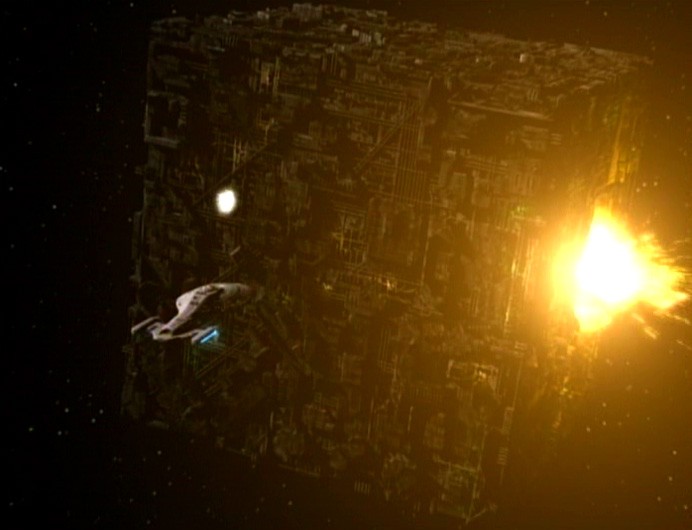
Subscribe: Apple Podcasts | Spotify | RSS | More
Hello Star Trek fans! Welcome to “The Pensky Podcast.” I’m Wes, and alongside my co-host Clay, we dive deep into the Star Trek universe. Today focuses on the intriguing Star Trek: Voyager episode, “Unity.” Whether you’re a seasoned Trekkie or just getting started, our discussion promises to be riveting.
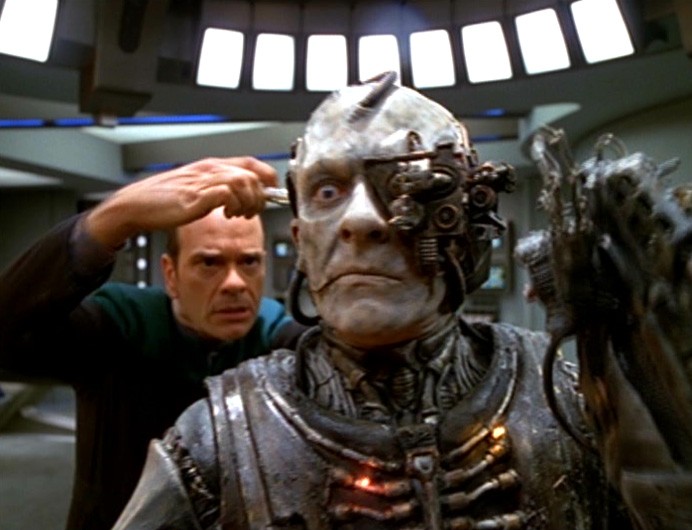
“Unity” is a standout episode from Voyager’s third season . Aired on February 12, 1997, the narrative unfolds around Commander Chakotay . He discovers survivors from various species, all former Borg drones now seeking a fresh start. Their tale takes a turn when they express a desire to form a new type of collective, leading to moral dilemmas and unexpected alliances. Things ramp up in intensity as they request Voyager’s assistance activating a dormant Borg cube.
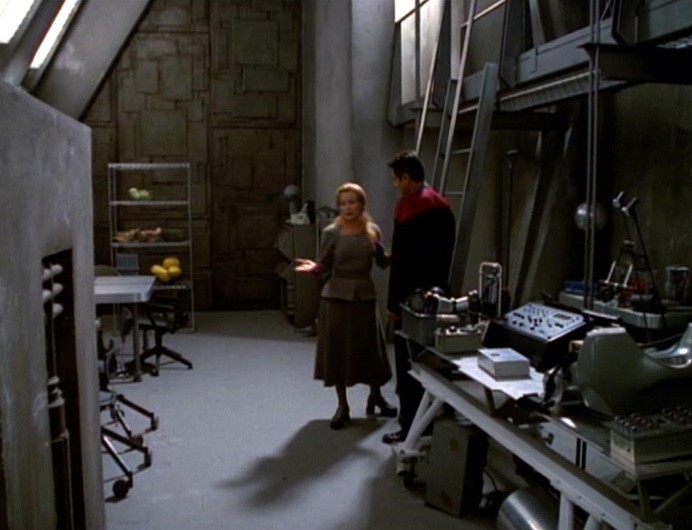
In our podcast, Clay and I delve into the thematic depths of “Unity.” The Borg’s return to the series ignites our conversation. A question we grapple with: are the Borg a metaphor for raw capitalism, or are they symbolic of collectivism? Actually, that’s more of a side conversation, but the plot of “Unity” does a decent job at examining what it means to be an “ex-Borg” in the same way that “ I, Borg ” and “ Descent ” did with TNG.
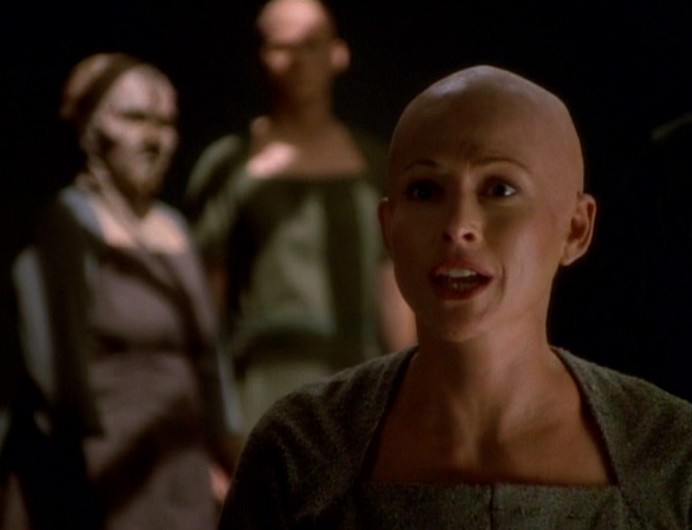
Furthermore, we dissect the intentions of the ex-Borgs. Their plans, somewhat briefly touched upon in the episode, are explored in-depth in our discussion. The decision to activate a dormant Borg cube — its potential consequences and the ethical implications — is a topic that provokes many thoughts and theories (and memories of Star Trek: Picard ). It’s this blend of narrative breakdown and exploration that makes our conversation both lively and enlightening – and this is a long one!
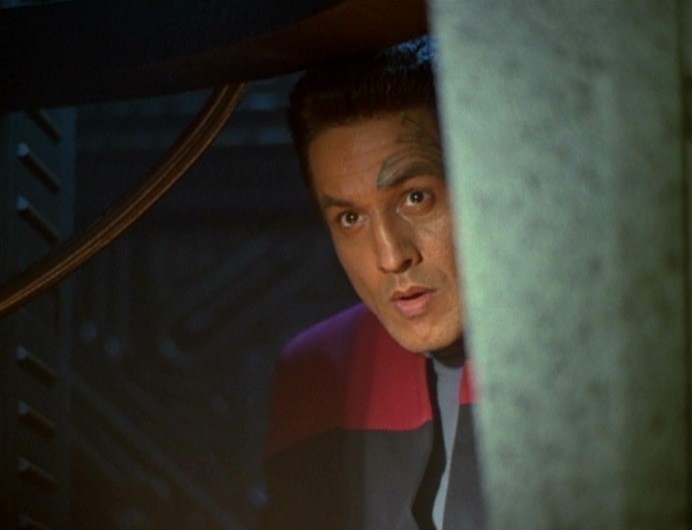
In conclusion, “ The Pensky Podcast ” is a treasure trove of entertainment and sharp analysis. We fervently tackle episodes like “Unity,” sharing our perspectives and inviting diverse opinions. Embark on this Trek-filled journey with us! And for those wanting to dive even deeper and support our work, our Patreon page awaits your visit.
Cast of Star Trek: Voyager
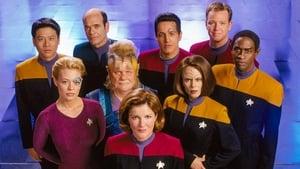
Portrays Captain Kathryn Janeway, the resolute commanding officer of the USS Voyager who leads her crew on their journey back to the Alpha Quadrant.
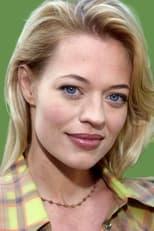
Assumes the role of Seven of Nine, a former Borg drone who struggles with her reclaimed individuality and humanity while serving on the Voyager.
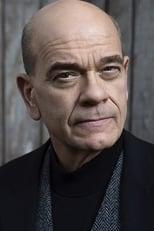
Plays The Doctor, Voyager's Emergency Medical Hologram who gains sentience and a layered personality as the show progresses.
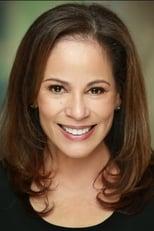
Depicts B'Elanna Torres, the half-human, half-Klingon Chief Engineer of the Voyager with a fiery temper and brilliant engineering mind.
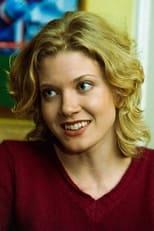
Features as Kes, a member of the Ocampa species who exhibits telepathic powers and serves as the Voyager's field medic for a time.
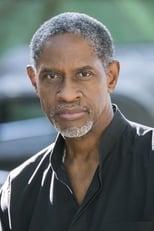
Represents Tuvok, the Vulcan security officer whose logic and discipline are paramount in maintaining order aboard the ship.
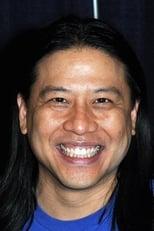
Is known for his role as Ensign Harry Kim, the operations officer who grapples with the challenges of being far from Earth while exhibiting unwavering loyalty to his crewmates.
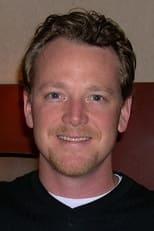
Takes on the character of Tom Paris, the helmsman with a checkered past whose piloting skills and character growth become essential to the Voyager's journey.
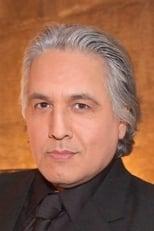
Embodies Chakotay, the first officer and former Maquis member who integrates his native cultural beliefs with Starfleet principles.
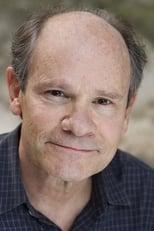
Fills the shoes of Neelix, the Talaxian chef and morale officer whose cheerful demeanor and local knowledge become invaluable to the crew.
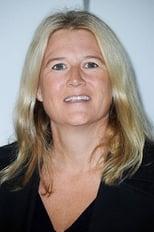
Appears as Ensign Samantha Wildman, a Starfleet science officer who brings familial human elements to the spaceship as a mother and dedicated crew member.
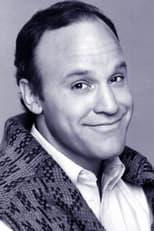
Plays Cosimo, a recurring character who provides guidance to various Voyager crew members during their challenging journey.
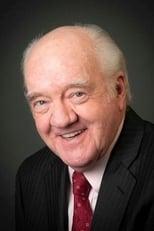
Our free email delivers the daily top 10 TV shows and top 10 movies directly to your inbox. Stay ahead of the trends. Sign up below.
Unity (Star Trek: Voyager)
17th episode of the 3rd season of star trek: voyager / from wikipedia, the free encyclopedia, dear wikiwand ai, let's keep it short by simply answering these key questions:.
Can you list the top facts and stats about Unity (Star Trek: Voyager)?
Summarize this article for a 10 year old
" Unity " is the 17th episode of the third season of the American science fiction television series Star Trek: Voyager , the 59th episode overall. The episode first aired on the UPN network on February 12, 1997, as part of sweeps week . It was written by producer Kenneth Biller , and is the second episode to be directed by cast member Robert Duncan McNeill . It marked the first major appearance of the Borg in Voyager , which were kicked off with a teaser ending in the prior episode.
Set in the 24th century, the series follows the adventures of the Starfleet and Maquis crew of the starship USS Voyager after they were stranded in the Delta Quadrant far from the rest of the Federation . In this episode, while on an away mission, Chakotay is taken in by a group of former Borg who seek help from the crew of Voyager to reactivate their neural link . The ex-Borg force Chakotay to reactivate a Borg cube (a large Borg spaceship), but, in their new-found "Co-operative", the ex-Borg make the cube self-destruct, saving Voyager .
Biller was influenced by the story of the Tower of Babel in writing the episode, and also considered the dissolution of the Soviet Union to be an influence. The crew re-used the make-up and costumes of the Borg designed for the film Star Trek: First Contact , but sets were not re-used. A new fully computer generated Borg cube was created for "Unity", and the storyline of the episode was intended as a hint to those in the later two-part episode " Scorpion ". According to Nielsen ratings , it received a 5.4/8 percent share of the audience on first broadcast. "Unity" was received positively by critics, with praise directed at McNeill's direction as well as Biller's plot.
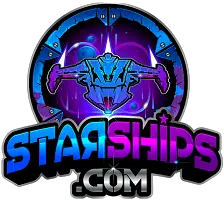
The Cast of Star Trek Voyager – Then and Now
By: Author Brad Burnie
Posted on Published: January 30, 2022 - Last updated: September 22, 2022
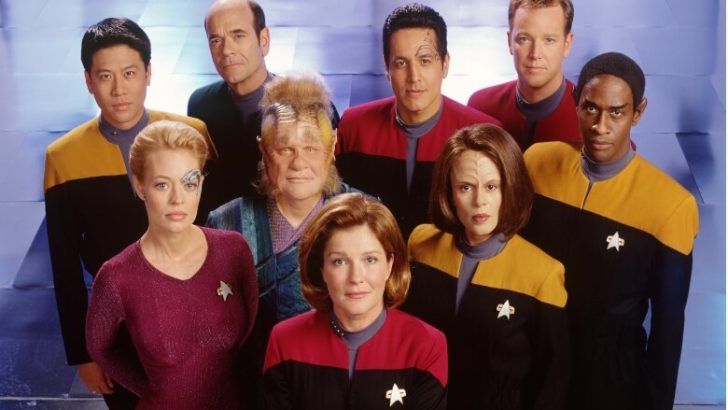
Share the Universe!
The Star Trek Voyager is the fifth series and fourth sequel to Star Trek: The Original Series. It originally aired on the then United Paramount Network (UPN) from January 1995 to May 2001 and lasted 172 episodes spanning over seven seasons.
The pilot episode, Caretaker , was actually shot in September 1994, meaning the cast had worked together on set for more than six years, making them almost family.
The series was a big hit as it introduced new ideas to the franchise, like the first female captain of a Starfleet vessel, new alien species, and the use of CGI technology for the first time on Star Trek, which rendered better space shots.
The show’s success meant the cast also became household names, and it was a defining period in their careers.
Because we (Trekkies) were stranded right there with them in the uncharted Delta Quadrant, 70,000 light-years away from the Earth, we became invested in their lives as well. We were together for an entire seven seasons, trying to find the way back to Earth through seemingly insurmountable obstacles. Therefore, it should not be a surprise that we have been keeping up with them beyond Star Trek: Voyager. Here is what they have been up to.
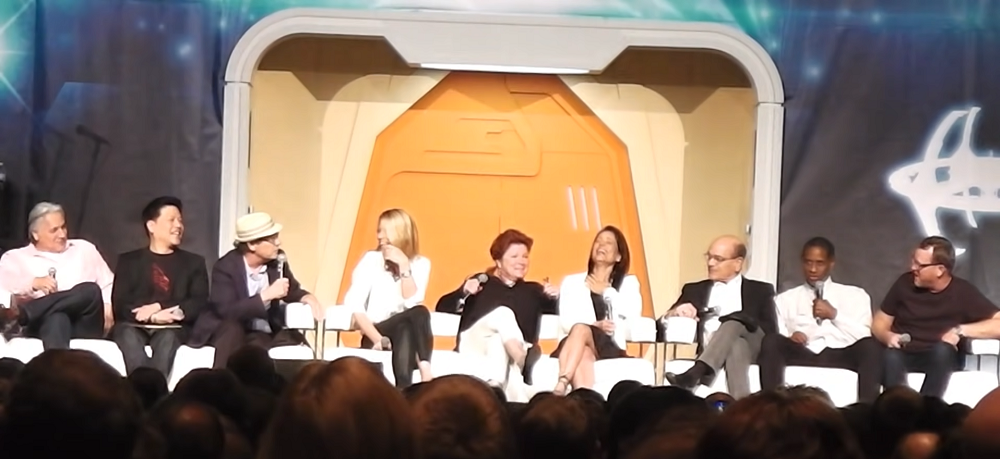
Katherine Kiernan Maria Mulgrew (Kate Mulgrew)
She played Captain Kathryn Janeway, Commander of the USS Voyager . The first-ever female captain to be featured in a Star Trek series and the lead character.
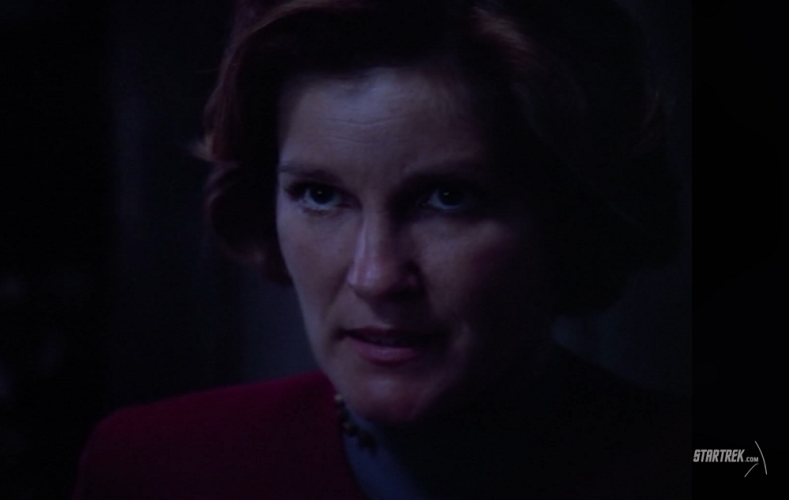
During the Voyager filming, Kate was also featured in animations like Aladdin as Queen Hippsodeth’s voice and Gargoyles as Titania. She has been cast in several other animations since Stretch Armstrong and the Flex Fighters , Infinity Train, and other cameo roles. She has also done voice-overs for a host of video games, Star Trek-related and otherwise.
Her television presence is also flourishing as she has been cast in some highly-rated shows like Mr. Mercedes , Warehouse 13 , Mercy , The Black Donnelly’s, and Orange Is the New Black . She won the Critics’ Choice Television Award for the Best Supporting Actress in a Comedy Series in 2014 for her role as Galina Red Reznikov in Orange Is the New Black . The same year she was nominated for Outstanding Supporting Actress in a Comedy Series in the Primetime Emmy Awards for the same role.
Since then, she has also featured in a number of movies, documentaries, short films, and Broadway productions.
She is still involved in expanding the Star Trek franchise and has been cast in the upcoming animated series Star Trek: Prodigy, currently in production for Nickelodeon.
Personal Life
Kate was finalizing her divorce with Robert Egan, with whom they had two children when the Voyager was first airing in 1995. She was still searching for the daughter she had placed for adoption earlier in her career as a single terrified actor. She got married to Tim Hagan in 1996, but they later divorced in 2014. She reconnected with the daughter she had placed for adoption in 2001.
Robert Adame Beltran
He played Commander Chakotay, the Native American First Officer of the USS Voyager. He reluctantly assumes the position after his crew of Maquis rebels is forced to join forces with the USS Voyager when they are both stranded in the Delta Quadrant.
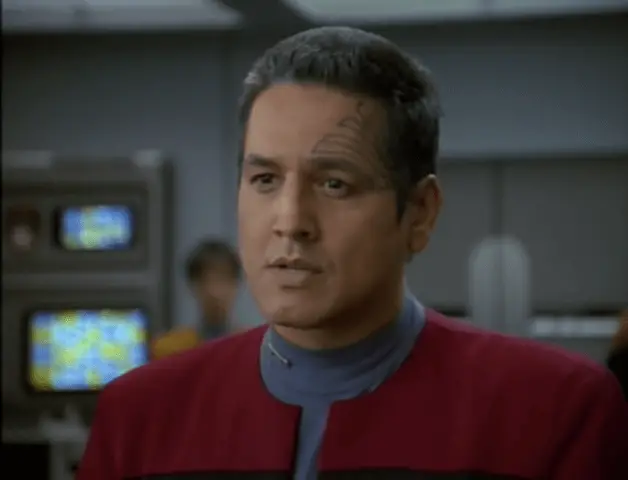
Robert won the Outstanding Actor in a Television Series at the Nosotros Golden Eagle Awards in 1997 after getting nominated for Outstanding Television Series Actor in a Crossover Role at the NCLR Bravo Awards the previous year.
Beltran would get nominated again in 1998 and 1999 at the same awards, now renamed the American Latino Media Arts (ALMA) Awards for the same role in the category Outstanding Individual Performance in a Television Series in a Crossover Role.
Playing Chakotay remains his most celebrated television presence, although he has made cameo appearances in many TV series, films, and documentaries since then. He has appeared in a few movies and is also featured in Star Trek Voyager’s game : Elite Force .
Robert lives in Los Angeles and is a big supporter of the National Down Syndrome Society. He even hosts an annual Galaxy Ball as a fundraiser for the Down’s Syndrome Association of Los Angeles to connect those afflicted with the condition and their families with resources and support systems. He says he is driven to do something because his youngest sibling has down syndrome and knows what the children go through without professional help.
Roxann Dawson
She was Lieutenant B’Elanna Torres, the Klingon-Human hybrid who got to be Chief Engineer of the USS Voyager after the unplanned merger of Voyager and Val Jean crews in the Delta Quadrant. She remains relevant throughout the series for many reasons, the least of which is her long courtship with Lieutenant Junior Grade Thomas Eugene Paris, which leads to marriage and their daughter Miral Paris’s birth.
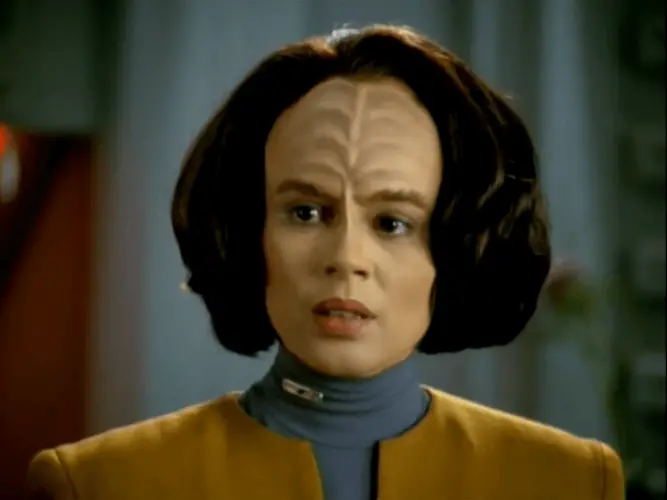
Dawson got to direct two episodes of the Star Trek: Voyager while still a part of the cast: Riddles and Workforce , then went on to direct 10 episodes of Star Trek: Enterprise. This means she was already a director and an actor while shooting the Voyager.
She won an ALMA Award in 2001 for Outstanding Achievement in a Television Series for her role in the Star Trek Voyager after being consistently nominated in different categories in 1996, 1998, 1999, and 2000. She was also involved in other award-winning during this period, like the Foto Novelas, which took ALMA Awards in 1998 for Outstanding Latino Casts.
She has since focused on directing several episodes from a host of TV shows, documentaries, and films under her belt. In 2008 she was nominated in 3 separate awards, the ALMA, Hugo, and NAACP Image Awards, for her directed episodes in Heroes.
Dawson has two adopted daughters, Emma and Mia (who was adopted from China), from her marriage to Casey Biggs before the voyage. She is currently married to casting director Eric Dawson.
Robert Duncan McNeill
He played Thomas Eugene Paris, a disgraced pilot from a renowned family who gets a chance to redeem himself when assigned to spy on the Marquis rebels. He will proceed to be the helm engineer and supporting medic of the USS Voyager.
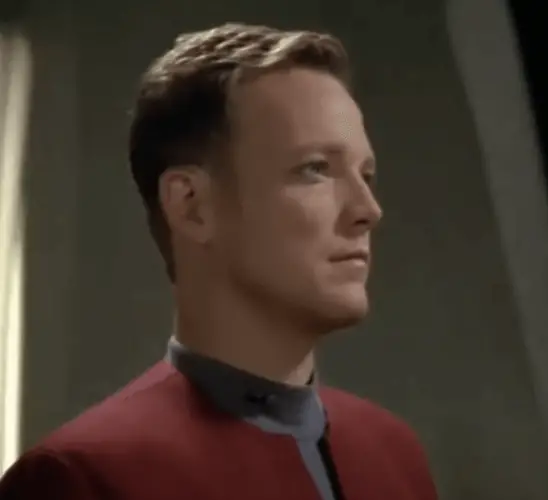
After the Star Trek Voyager, he has featured in the Voyager video game ‘Elite Force ’ and Star Trek Online. He has also acted in a couple of episodes in TV shows. He focused on directing and producing and has quite a number of films and TV shows to his credit. Most notable is the series Chuck which he was involved in all 73 episodes.
Robert lives in Los Angeles and has three children, Taylor McNeill, Kyle McNeill, and Carter Jay McNeill.
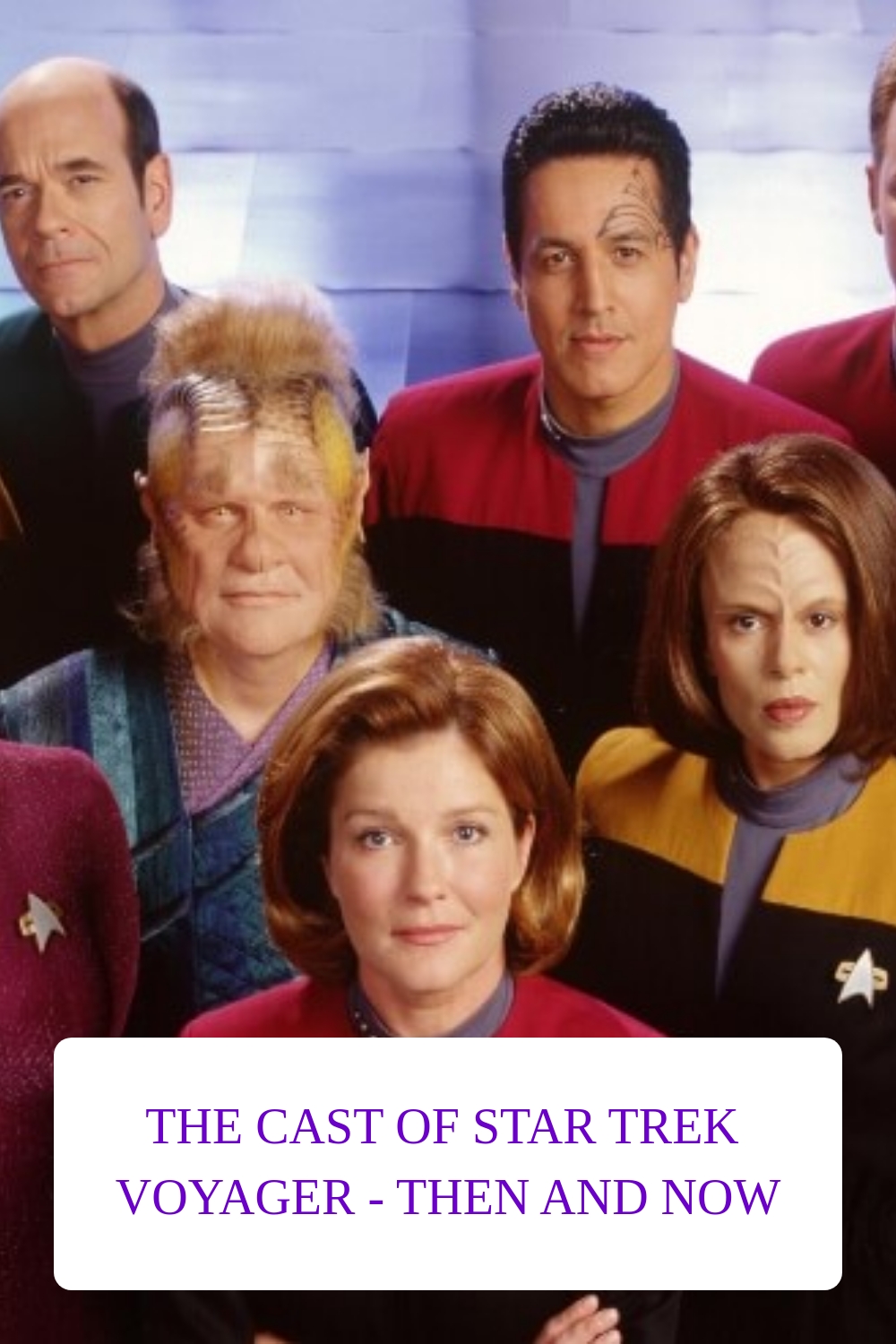
Brad Burnie is the founder of Starships.com. He loves all video game genres. In his spare time, he loves reading, watching movies, and gaming
Screen Rant
Star trek: voyager & ds9 crossed over in the mirror universe.
Despite being stuck in the Delta Quadrant, a Star Trek: Voyager crew member briefly crossed over into the Mirror Universe to join the DS9 cast.
- Star Trek: Voyager and Deep Space Nine crossed over within the Mirror Universe, bringing the shows together across vast cosmic distances.
- The crossovers featuring characters like Tuvok and Doctor Zimmerman added depth to the interconnected Star Trek universe.
- Despite differing tones, Voyager and DS9 remain beloved shows, delighting audiences through streaming platforms today.
Despite being separated by thousands of light years, Star Trek: Voyager and Star Trek: Deep Space Nine crossed over inside the Mirror Universe. Voyager and Deep Space Nine were very different in tone, due to the differing approaches of the shows' respective producers, Brannon Braga and Ira Steven Behr. Where DS9 was a serialized drama that tackled huge themes, Voyager embraced a traditional episodic approach that could sometimes feel disposable and regressive . Despite their differences in tone, DS9 and Voyager are two beloved Star Trek TV shows that still delight audiences to this day via streaming, which is a testament to the versatility and timelessness of the franchise.
As the USS Voyager was stranded in the Delta Quadrant, it was hard, but not impossible, for Star Trek: Voyager to cross over into Star Trek: Deep Space Nine 's Alpha and Gamma Quadrant settings. In fact, there was a surprising number of Star Trek characters who guested on Voyager from Captain Hikaru Sulu (George Takei) to Commander William T. Riker (Jonathan Frakes). Creative approaches such as intervention by Q (John de Lancie), glimpses of Starfleet's attempts to locate the missing USS Voyager, and even the Mirror Universe allowed Star Trek: Voyager to crossover with its 1990s contemporaries, including Star Trek: Deep Space Nine .
Every 1990s Era Star Trek Crossover
Star trek: voyager’s tuvok crossed over with ds9’s mirror universe, star trek: deep space nine, season 3, episode 19, "through the looking glass".
In Star Trek: Deep Space Nine season 3, episode 19, "Through the Looking Glass", Commander Benjamin Sisko (Avery Brooks) is captured and taken to the Mirror Universe by "Smiley" O'Brien (Colm Meaney). The Rebellion in the Mirror Universe wanted Prime Sisko to convince the ex-wife of his Terran counterpart to join the resistance against the Klingon-Cardassian Alliance . As Sisko is taken to the Terran Rebellion's enclave, he meets the Mirror Universe variants of his DS9 crew mates. In the same scene Sisko also meets the Mirror Universe version of Star Trek: Voyager 's Lt. Tuvok (Tim Russ), leading a more logic-driven faction of the Rebellion.
Mirror Tuvok is the only Mirror Universe variant of a Star Trek: Voyager character that has appeared on TV.
Tuvok was included in "Through the Looking Glass" at the request of Rick Berman , who presumably wanted to strengthen the links between Star Trek: Deep Space Nine and Star Trek: Voyager . DS9 season 3 and Voyager season 1 aired concurrently with each other, and "Through the Looking Glass" aired on April 17, 1995, a week when there was no new episode of Voyager . In this gap between "State of Flux" and "Heroes and Demons", therefore, a brief crossover between Voyager and DS9 was a good way to keep the fledgling Star Trek show in the minds of the audience.
Every Voyager & DS9 Star Trek Crossover
"Through the Looking Glass" isn't the only crossover between Star Trek: Voyager and Star Trek: Deep Space Nine . The Voyager pilot "Caretaker" features the USS Voyager depart from Deep Space Nine to search for the missing Tuvok and the Maquis ship, the Valjean in the Badlands. As with McCoy and Picard in the previous Star Trek pilots, DS9 's Quark (Armin Shimerman) appeared in "Caretaker" to pass the baton to Voyager . In a scene that demonstrated how green the young Ensign Harry Kim (Garrett Wang) was, he almost falls for one of Quark's latest scams, until he's rescued by Lt. Tom Paris (Robert Duncan McNeill).
Gul Evek (Richard Poe) and Morn (Mark Allen Shepherd) are the two other Star Trek: Deep Space Nine characters that appear in the Star Trek: Voyager pilot.
A version of Star Trek: Voyager 's Doctor (Robert Picardo) appeared in Star Trek: Deep Space Nine season 5, episode 16, "Doctor Bashir, I Presume" alongside his creator Dr. Lewis Zimmerman (also Picardo). Technically, Star Trek: Deep Space Nine marks the first real appearance by the EMH's creator, who had previously appeared in Voyager as a holographic replica. The real Zimmerman would later appear in Star Trek: Voyager season 6, episode 24, "Life Line", which also featured Lt. Reginald Barclay (Dwight Schultz) and Counselor Deanna Troi (Marina Sirtis) further strengthening the bonds between different corners of the Star Trek universe.
All episodes of Star Trek: Deep Space Nine and Star Trek: Voyager are available to stream on Paramount+.
Star Trek: Deep Space Nine
*Availability in US
Not available
Star Trek: Deep Space Nine, also known as DS9, is the fourth series in the long-running Sci-Fi franchise, Star Trek. DS9 was created by Rick Berman and Michael Piller, and stars Avery Brooks, René Auberjonois, Terry Farrell, and Cirroc Lofton. This particular series follows a group of individuals in a space station near a planet called Bajor.
Star Trek: Voyager
The fifth entry in the Star Trek franchise, Star Trek: Voyager, is a sci-fi series that sees the crew of the USS Voyager on a long journey back to their home after finding themselves stranded at the far ends of the Milky Way Galaxy. Led by Captain Kathryn Janeway, the series follows the crew as they embark through truly uncharted areas of space, with new species, friends, foes, and mysteries to solve as they wrestle with the politics of a crew in a situation they've never faced before.
- Cast & crew
- User reviews
Star Trek: Voyager

Pulled to the far side of the galaxy, where the Federation is seventy-five years away at maximum warp speed, a Starfleet ship must cooperate with Maquis rebels to find a way home. Pulled to the far side of the galaxy, where the Federation is seventy-five years away at maximum warp speed, a Starfleet ship must cooperate with Maquis rebels to find a way home. Pulled to the far side of the galaxy, where the Federation is seventy-five years away at maximum warp speed, a Starfleet ship must cooperate with Maquis rebels to find a way home.
- Rick Berman
- Michael Piller
- Jeri Taylor
- Kate Mulgrew
- Robert Beltran
- Roxann Dawson
- 427 User reviews
- 26 Critic reviews
- 33 wins & 84 nominations total
Episodes 168

Photos 2084

- Capt. Kathryn Janeway …

- Cmdr. Chakotay …

- Lt. B'Elanna Torres …

- Lt. Tom Paris …

- The Doctor …

- Lt. Tuvok …

- Ensign Harry Kim …

- Lt. Ayala …

- Voyager Computer …

- Seven of Nine …

- William McKenzie …

- Naomi Wildman

- Ensign Brooks

- Science Division Officer …
- Jeri Taylor (showrunner)
- All cast & crew
- Production, box office & more at IMDbPro
Stellar Photos From the "Star Trek" TV Universe

More like this

Did you know
- Trivia When auditioning for the part of the holographic doctor, Robert Picardo was asked to say the line "Somebody forgot to turn off my program." He did so, then ad-libbed "I'm a doctor, not a light bulb" and got the part.
- Goofs There is speculation that the way the Ocampa are shown to have offspring is an impossible situation, as a species where the female can only have offspring at one event in her life would half in population every generation, even if every single member had offspring. While Ocampa females can only become pregnant once in their lifetime, if was never stated how many children could be born at one time. Kes mentions having an uncle, implying that multiple births from one pregnancy are possible.
Seven of Nine : Fun will now commence.
- Alternate versions Several episodes, such as the show's debut and finale, were originally aired as 2-hour TV-movies. For syndication, these episodes were reedited into two-part episodes to fit one-hour timeslots.
- Connections Edited into Star Trek: Deep Space Nine: Inter Arma Enim Silent Leges (1999)
User reviews 427
- Tweetienator
- Jul 16, 2020
- How many seasons does Star Trek: Voyager have? Powered by Alexa
- Why do the Nacelles of the Voyager pivot before going to warp?
- Is it true there is a costume error in the first season?
- How many of Voyager's shuttles were destroyed throughout the course of the show?
- January 16, 1995 (United States)
- United States
- Heroes & Icons
- Memory Alpha, the Star Trek wiki
- Star Trek: VOY
- Donald C. Tillman Water Reclamation Plant - 6100 Woodley Avenue, Van Nuys, Los Angeles, California, USA
- Paramount Television
- United Paramount Network (UPN)
- See more company credits at IMDbPro
Technical specs
- Runtime 44 minutes
- Dolby Digital
Related news
Contribute to this page.

- See more gaps
- Learn more about contributing
More to explore

Recently viewed

IMAGES
VIDEO
COMMENTS
"Star Trek: Voyager" Unity (TV Episode 1997) cast and crew credits, including actors, actresses, directors, writers and more. Menu. Movies. ... Star Trek: Voyager Season 3 (1996-97) (Average: 7.54) a list of 26 titles created 12 Feb 2022 Borgs a list of 24 titles ...
Unity: Directed by Robert Duncan McNeill. With Kate Mulgrew, Robert Beltran, Roxann Dawson, Jennifer Lien. Chakotay finds a planet of unassimilated Borg drones from all over the galaxy.
"Star Trek: Voyager" Unity (TV Episode 1997) cast and crew credits, including actors, actresses, directors, writers and more. Menu. ... My Favorite Star Trek: Voyager Episodes a list of 32 titles created 19 Apr 2022 Star Trek [chronological at episode level] a list of 812 titles ...
"Unity" is the 17th episode of the third season of the American science fiction television series Star Trek: Voyager, the 59th episode overall. The episode first aired on the UPN network on February 12, 1997, as part of sweeps week.It was written by producer Kenneth Biller, and is the second episode to be directed by cast member Robert Duncan McNeill.
Chakotay is injured and trapped on a world where the inhabitants are embroiled in conflict, but the people who rescue and care for him harbor a disturbing secret. "First officer's log, stardate 50614.2. Ensign Kaplan and I are returning to Voyager after completing a scouting mission in the Nekrit Expanse." While attempting to find a faster way through the Nekrit Expanse, Commander Chakotay and ...
Robert Picardo, Roxann Dawson, Ethan Phillips, Tim Russ at a Voyager panel in 2009. Star Trek: Voyager is an American science fiction television series that debuted on UPN on January 16, 1995, and ran for seven seasons until May 23, 2001. The show was the fourth live-action series in the Star Trek franchise. This is a list of actors who have appeared on Star Trek: Voyager
Episode Guide for Star Trek: Voyager 3x17: Unity. Episode summary, trailer and screencaps; guest stars and main cast list; and more.
Find trailers, reviews, synopsis, awards and cast information for Star Trek: Voyager : Unity (1997) - Robert Duncan McNeill on AllMovie - The crew of the Voyager struggle to find a way to…
When Voyager reaches a planet called Unity, they discover a group of Borg who have been driven to psychosis by a virus. They have split into independent factions, each of which is trying to survive. ... We are a Star Trek fan site, dedicated to providing exciting synopses and plot summaries for our favorite episodes. Latest. Two of One. April 5 ...
In-depth critical reviews of Star Trek and some other sci-fi series. Includes all episodes of Star Trek: The Original Series, The Animated Series, The Next Generation, Deep Space Nine, Voyager, Enterprise, Discovery, Picard, Lower Decks, Prodigy, and Strange New Worlds. Also, Star Wars, the new Battlestar Galactica, and The Orville.
The autopsy of the Borg corpse is underway. - Janeway about sums it up. If the third season of Star Trek: Voyager is about the show embracing its place in the shadow of Star Trek: The Next Generation, then it makes sense that the third season would bring the crew into conflict with the Borg.The first two seasons of Voyager had leaned rather heavily upon the mythology of The Next Generation ...
Watch Star Trek: Voyager — Season 3, Episode 17 with a subscription on Paramount+, or buy it on Fandango at Home, Prime Video, Apple TV. Cmdr. Chakotay is attacked after trying to answer a ...
There was no crime, no hunger, no health problems. We lived as one harmonious family. Captain Kathryn Janeway : With all due respect, Dr. Frazier, you were one harmonious family bent on the violent assimilation of innocent cultures. Dr. Riley Frazier : Sometimes radical problems require radical solutions.
Find movie and film cast and crew information for Star Trek: Voyager : Unity (1997) - Robert Duncan McNeill on AllMovie
This is a list of minor fictional characters from the science fiction television series Star Trek: Voyager.Characters here are members of the crew, or passengers, on the starship Voyager as it makes its way home through unknown space during the course of the series. The minor characters generally appear at most in several episodes (out of 172), sometimes in episodes that largely concern them.
Star Trek Voyager S 3 E 16 "Unity". Chakotay gets some empathic Borg action this time. Ensign Kaplan and Chakotay are returning in a shuttle from a mission to scout an area of space known as the Nekrit Expanse. The local conditions are presenting some navigational challenges for them. When they eventually pick up a Federation signal, they are ...
Today focuses on the intriguing Star Trek: Voyager episode, "Unity." Whether you're a seasoned Trekkie or just getting started, our discussion promises to be riveting. "Unity" is a standout episode from Voyager's third season. Aired on February 12, 1997, the narrative unfolds around Commander Chakotay. He discovers survivors from ...
Star Trek: Voyager (TV Series 1995-2001) cast and crew credits, including actors, actresses, directors, writers and more. Menu. ... Series Cast verified as complete Kate Mulgrew ... Capt. Kathryn Janeway / ... 168 episodes, 1995-2001 Robert Beltran ... Cmdr. Chakotay ...
The cast of Star Trek: Voyager brings to life a diverse crew aboard the Starfleet vessel USS Voyager, stranded in the Delta Quadrant. A testament to unity and the indomitable human spirit, these well-defined characters navigate the unknowns of space while attempting to return home, giving audiences a mix of drama, discovery, and camaraderie over seven acclaimed seasons.
"Unity" is the 17th episode of the third season of the American science fiction television series Star Trek: Voyager, the 59th episode overall. The episode first aired on the UPN network on February 12, 1997, as part of sweeps week. It was written by producer Kenneth Biller, and is the second episode to be directed by cast member Robert Duncan McNeill.
List of episodes. " The Chute " is the 45th episode of Star Trek: Voyager, the third episode of the third season. In this science fiction story, two members of the crew of the USS Voyager are trapped in an alien prison. The episode was directed by Les Landau with a story by Clayvon C. Harris. It aired on UPN on September 18, 1996.
The pilot episode, Caretaker, was actually shot in September 1994, meaning the cast had worked together on set for more than six years, making them almost family. The series was a big hit as it introduced new ideas to the franchise, like the first female captain of a Starfleet vessel, new alien species, and the use of CGI technology for the first time on Star Trek, which rendered better space ...
Despite being separated by thousands of light years, Star Trek: Voyager and Star Trek: Deep Space Nine crossed over inside the Mirror Universe. Voyager and Deep Space Nine were very different in tone, due to the differing approaches of the shows' respective producers, Brannon Braga and Ira Steven Behr.Where DS9 was a serialized drama that tackled huge themes, Voyager embraced a traditional ...
Star Trek: Voyager: Created by Rick Berman, Michael Piller, Jeri Taylor. With Kate Mulgrew, Robert Beltran, Roxann Dawson, Robert Duncan McNeill. Pulled to the far side of the galaxy, where the Federation is seventy-five years away at maximum warp speed, a Starfleet ship must cooperate with Maquis rebels to find a way home.